Transforming Your Living Room into a Cinematic Oasis: Home Theater Ideas
Imagine sinking into plush seating, the lights dimming, and the immersive sounds of your favorite movie enveloping you. That’s the magic of a home theater, a personalized entertainment haven where you can escape the everyday and indulge in the world of cinema. But building a home theater isn’t just about throwing a big screen and some speakers into a room; it’s about crafting an experience. This guide delves into a wealth of home theater ideas to help you design the perfect space for your needs and budget, turning your living room into the ultimate entertainment destination.
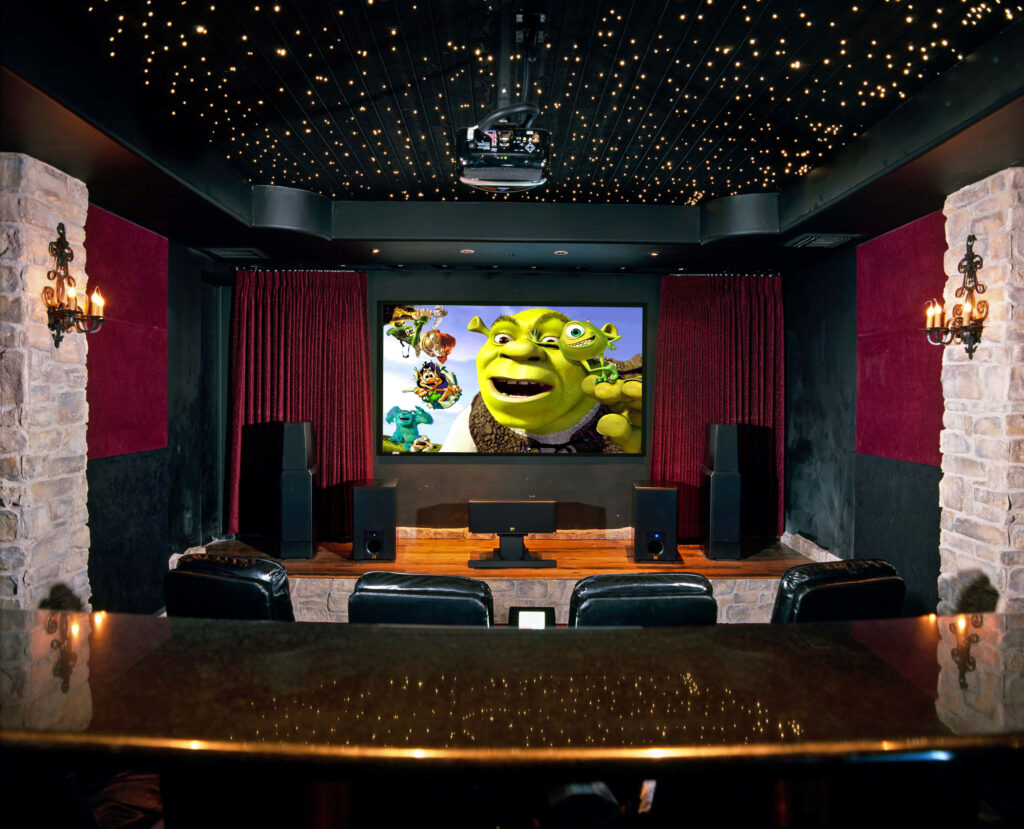
Why Invest in a Home Theater?
Beyond the obvious appeal of movie nights, a home theater offers a multitude of benefits:
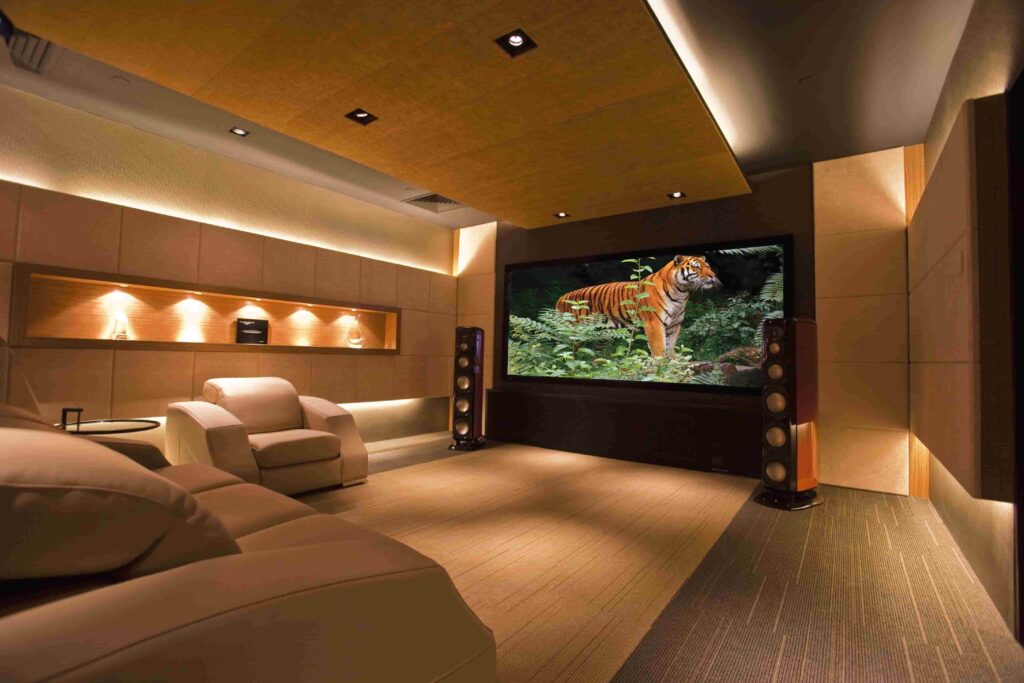
- Superior Entertainment: Experience movies, sports, and games with unparalleled picture and sound quality. Forget crowded cinemas and noisy environments; enjoy your content exactly as the creators intended.
- Convenience and Comfort: No more travel, ticket lines, or uncomfortable seating. Relax in your own space, with personalized settings and refreshments readily available.
- Social Hub: A home theater becomes a gathering place for family and friends, fostering shared experiences and creating lasting memories. Host movie marathons, game nights, or sporting event watch parties in style.
- Increased Home Value: A well-designed home theater can significantly enhance the value of your property, making it a desirable feature for potential buyers.
- Stress Relief and Relaxation: Unwind after a long day by immersing yourself in a captivating film or gaming session. A dedicated entertainment space provides a welcome escape from the pressures of daily life.
Planning Your Home Theater: Key Considerations
Before diving into specific design elements, it’s crucial to carefully plan your home theater. Consider these factors to ensure a successful and enjoyable outcome:
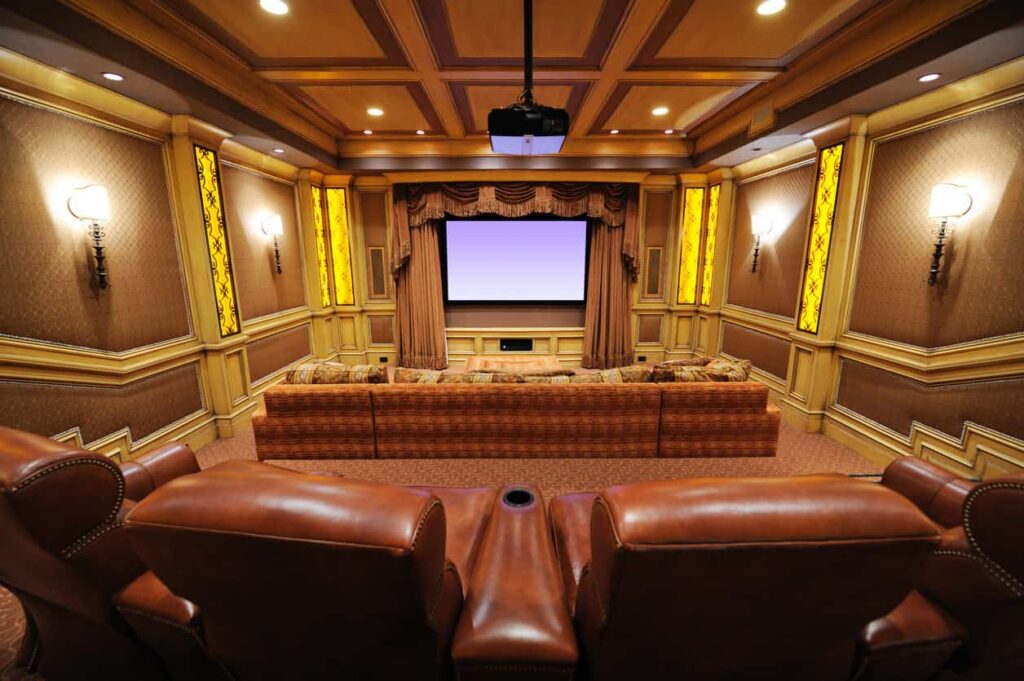
1. Space Assessment: Choosing the Right Room
The size and shape of your room will significantly influence your home theater design. A rectangular room is generally preferable to a square one, as it minimizes sound reflections and standing waves. Consider the following:
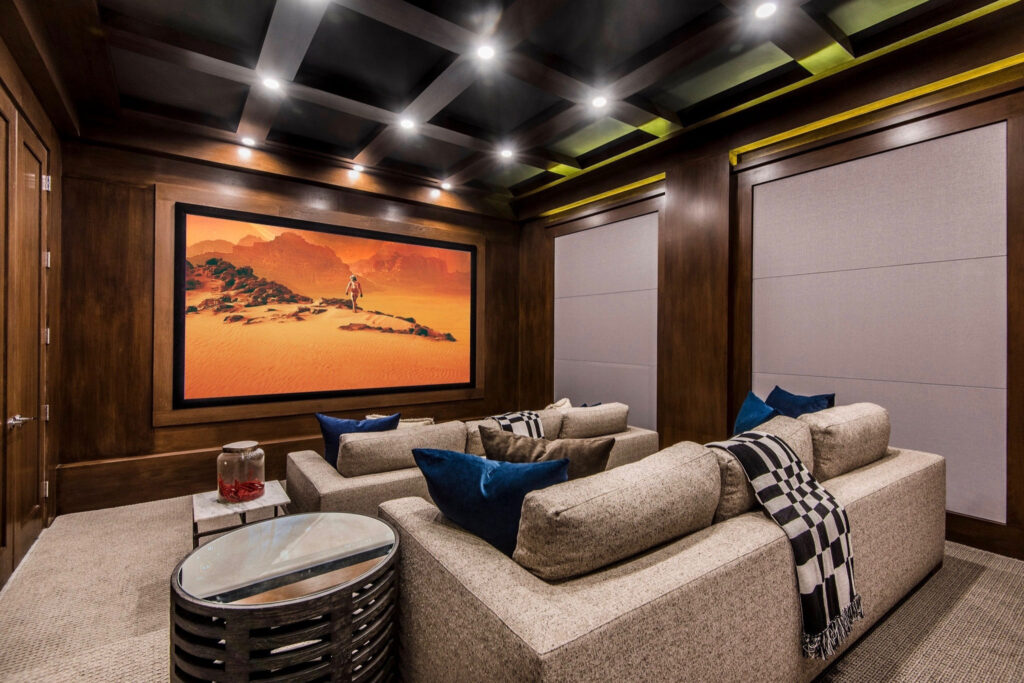
- Room Size: Larger rooms offer more flexibility in terms of screen size, seating arrangements, and speaker placement. However, smaller rooms can also be transformed into cozy and intimate home theaters.
- Room Shape: Avoid rooms with excessive angles or irregular shapes, as they can create acoustic challenges.
- Natural Light: Control over ambient light is essential for optimal viewing. Choose a room with minimal windows or invest in blackout curtains or shades.
- Room Acoustics: Hard surfaces like walls and floors can reflect sound, creating echoes and distorting audio quality. Consider incorporating acoustic treatments to dampen sound and improve clarity.
- Existing Infrastructure: Evaluate the existing electrical wiring, HVAC system, and structural elements of the room. Ensure they can accommodate the demands of your home theater equipment.
2. Budget Allocation: Setting Realistic Expectations
Home theater projects can range from a few hundred dollars to tens of thousands, depending on your desired level of sophistication. Establish a budget upfront and prioritize your spending based on your needs and preferences.
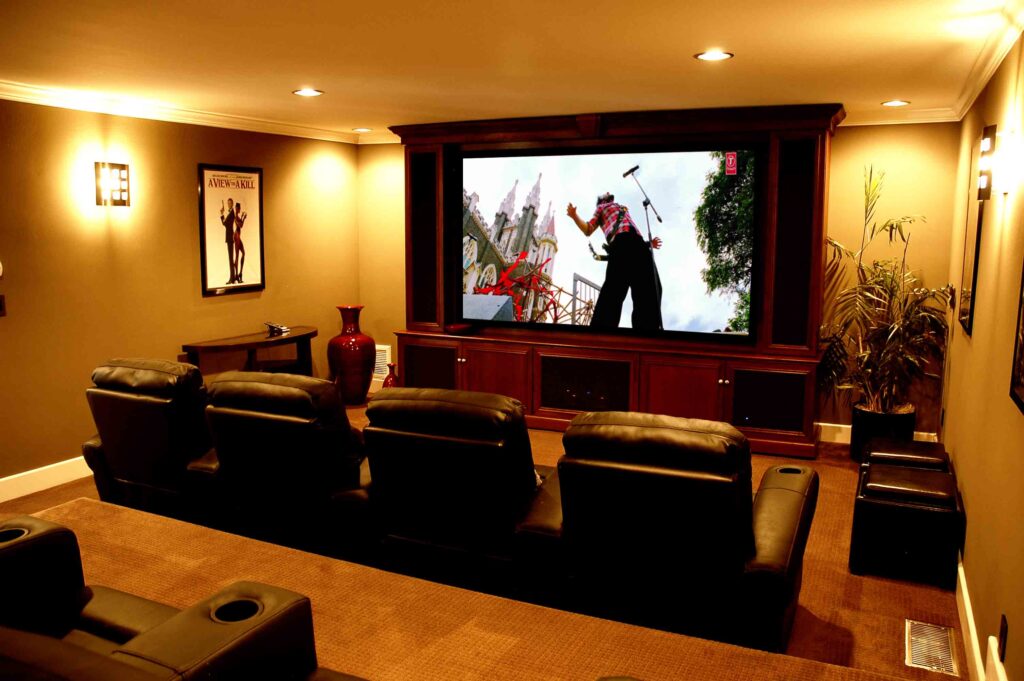
- Essential Equipment: Allocate funds for the core components, including the display (projector or TV), audio system (speakers, receiver), and source devices (Blu-ray player, streaming device).
- Acoustic Treatments: Investing in acoustic panels, bass traps, and diffusers can significantly improve sound quality.
- Seating and Furniture: Choose comfortable and supportive seating that complements your room’s aesthetics.
- Lighting: Implement a lighting scheme that allows for adjustable brightness and minimizes glare on the screen.
- Cables and Accessories: Don’t overlook the importance of high-quality cables, surge protectors, and other accessories.
- Installation Costs: Factor in the cost of professional installation if you’re not comfortable handling the wiring and setup yourself.
3. Seating Arrangement: Maximizing Comfort and Viewing Angles
The seating arrangement is crucial for ensuring optimal viewing for everyone in the room. Consider these factors:
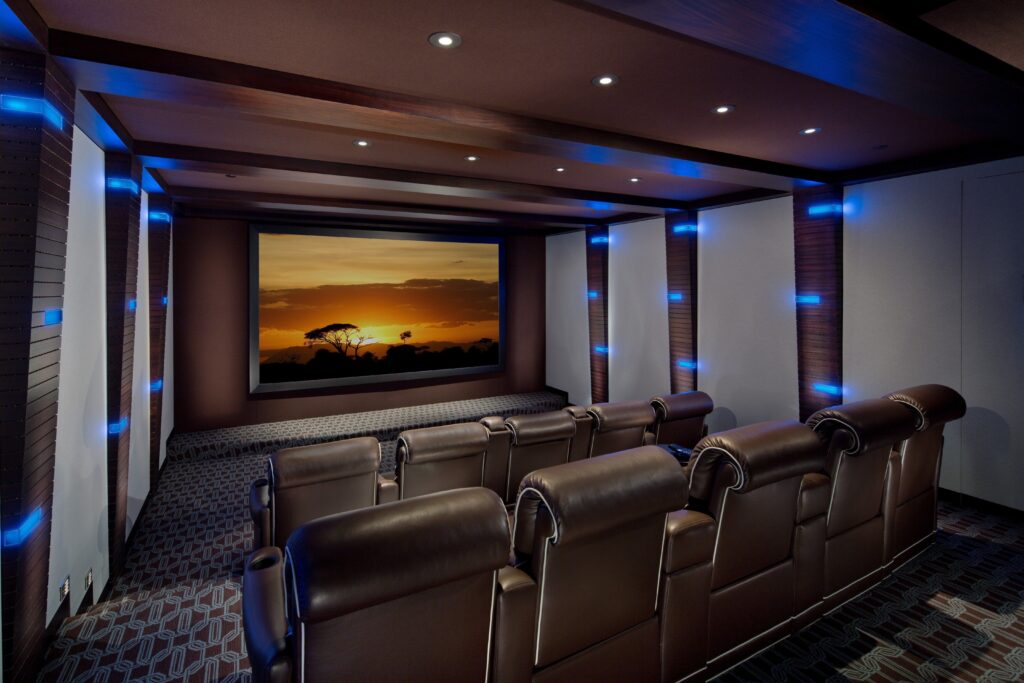
- Distance from Screen: The ideal viewing distance depends on the screen size. A general rule of thumb is to multiply the screen diagonal by 1.5 to 2.5.
- Seating Height: Ensure that everyone has a clear view of the screen without straining their neck.
- Number of Seats: Accommodate your typical viewing audience. Consider adding extra seating for guests.
- Seating Type: Choose comfortable and supportive seating, such as reclining chairs, sectionals, or dedicated home theater seating.
- Aisles and Pathways: Provide ample space for movement between seats and to access the room’s entrance.
Essential Home Theater Equipment: The Building Blocks of Your Experience
1. Display Technology: Projector vs. TV
The display is the centerpiece of your home theater. Choose between a projector and a TV based on your room size, budget, and viewing preferences.
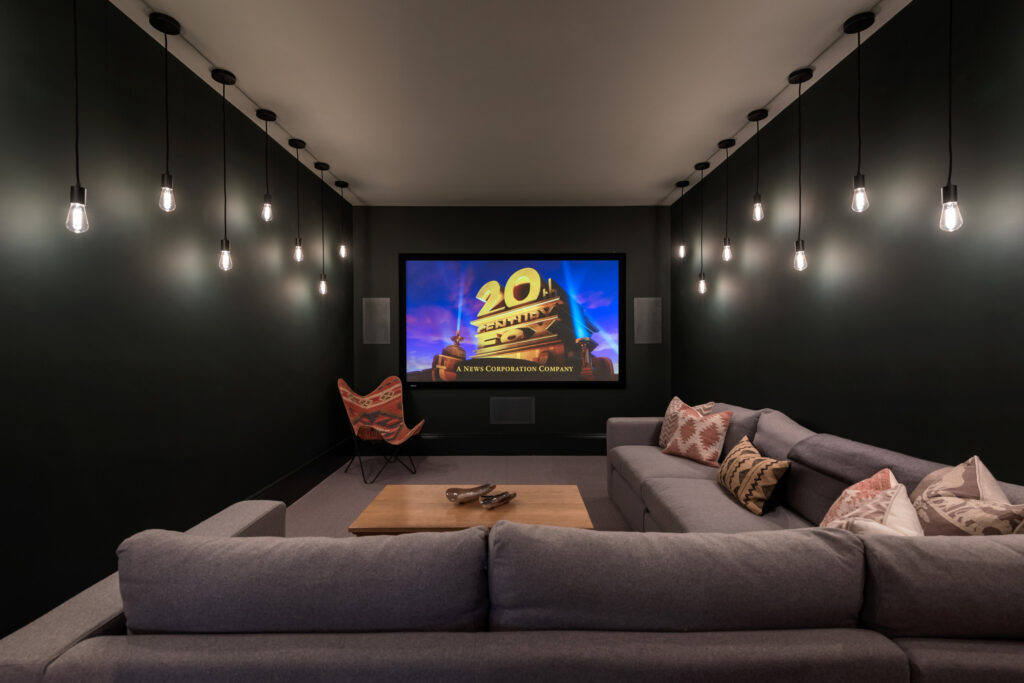
Projectors: The Immersive Experience
Projectors offer a truly cinematic experience, creating a large and immersive image that fills your field of vision. They are ideal for dedicated home theater rooms with good light control.
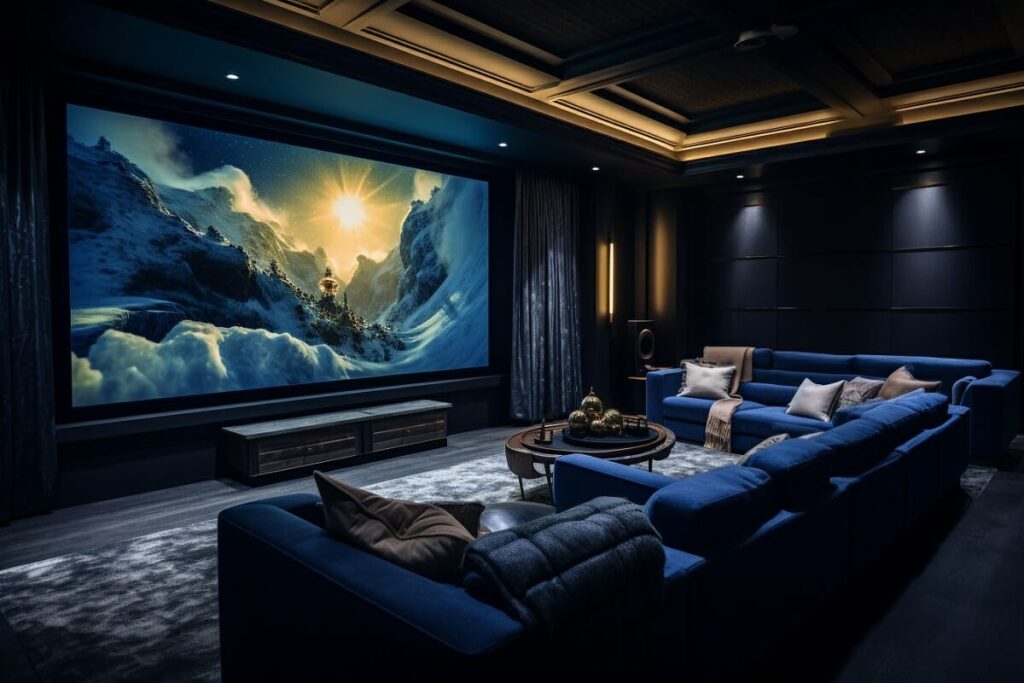
- Pros: Larger screen size, more immersive experience, cost-effective for very large screens.
- Cons: Requires a darkened room, can be more expensive than TVs for comparable image quality, requires a projector screen.
- Considerations: Choose a projector with high brightness (measured in lumens) and contrast ratio for optimal image quality. Consider throw distance (the distance between the projector and the screen) when selecting a projector.
TVs: The Versatile Option
TVs are a more versatile option, offering excellent image quality and brightness in a variety of lighting conditions. They are suitable for smaller rooms or spaces where light control is limited.
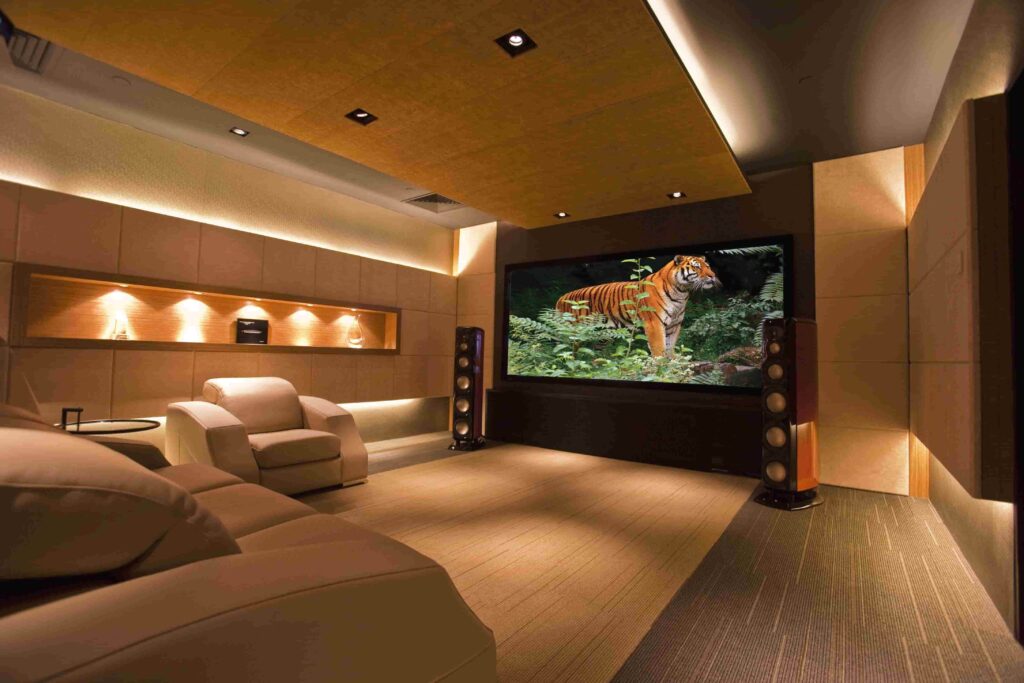
- Pros: Excellent image quality, bright and vibrant colors, works well in various lighting conditions, easy to set up.
- Cons: Limited screen size compared to projectors, can be more expensive than projectors for very large screens.
- Considerations: Choose a TV with a high resolution (4K or 8K), HDR (High Dynamic Range) support, and a fast refresh rate for smooth motion. Consider the viewing angle to ensure consistent image quality from different seating positions.
2. Audio System: Immersive Sound That Captivates
The audio system is just as important as the display for creating a truly immersive home theater experience. Choose a system that delivers clear, detailed, and dynamic sound.
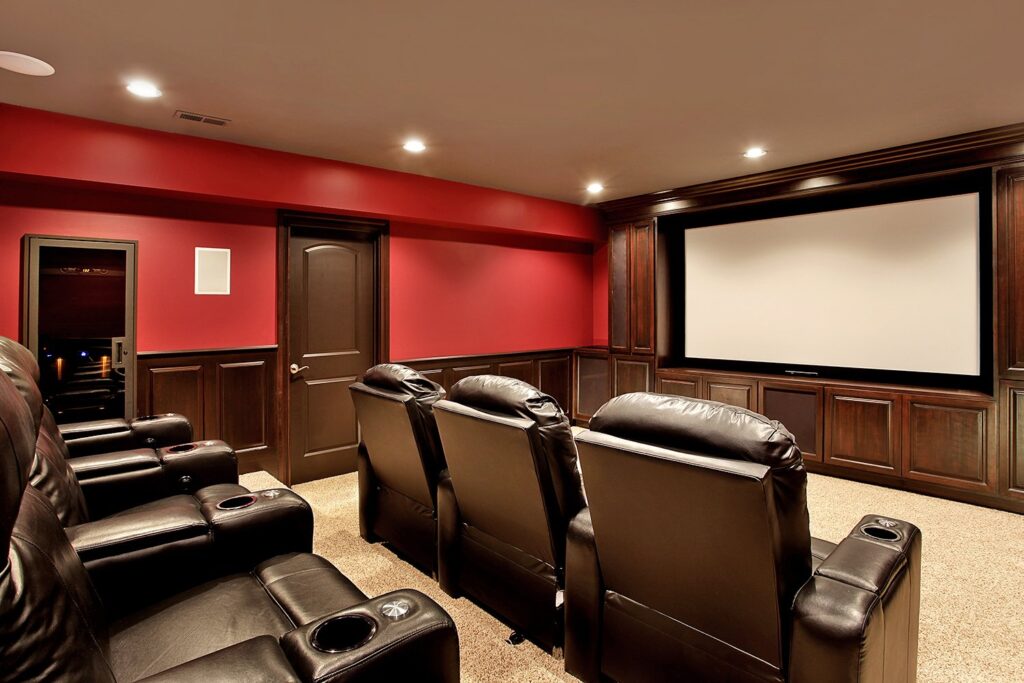
Surround Sound: Creating a 3D Audio Landscape
Surround sound systems use multiple speakers to create a 3D audio landscape that envelops the listener. The most common configurations are 5.1, 7.1, and Dolby Atmos.
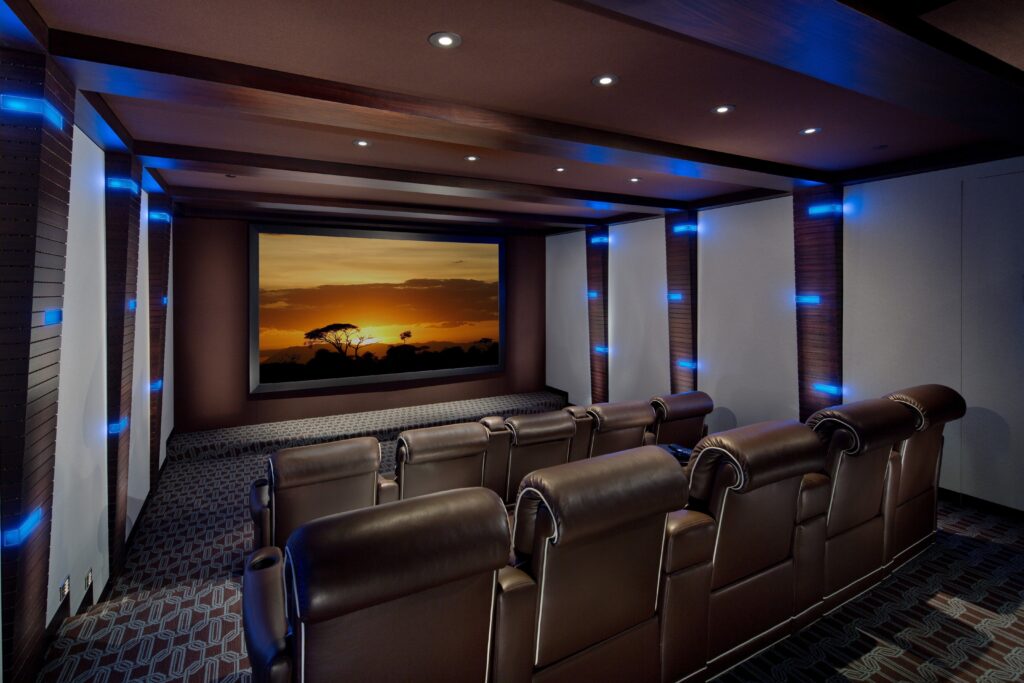
- 5.1 Surround Sound: Consists of five speakers (left, center, right, left surround, right surround) and a subwoofer.
- 7.1 Surround Sound: Adds two additional surround speakers (left rear, right rear) for a more immersive experience.
- Dolby Atmos: Adds overhead speakers to create a true 3D audio experience.
Receiver: The Brain of Your Audio System
The receiver is the central hub of your audio system, processing audio signals and sending them to the speakers. Choose a receiver with sufficient power and features to meet your needs.
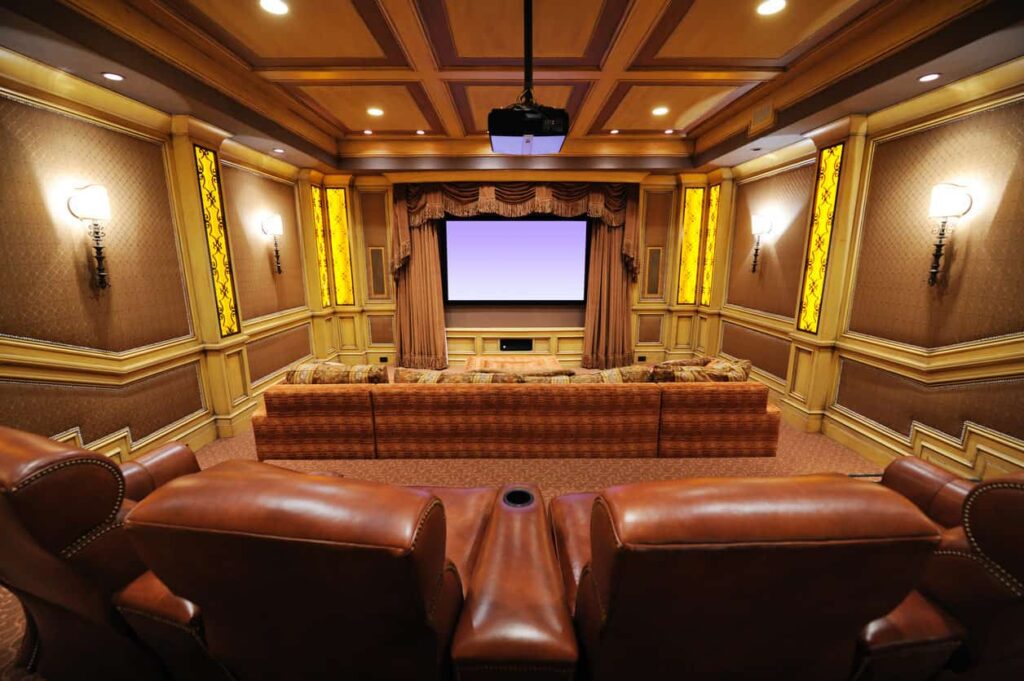
- Power Output: Choose a receiver with enough power to drive your speakers without distortion.
- Number of Channels: Ensure the receiver supports the number of speakers in your system.
- Connectivity: Look for a receiver with ample HDMI inputs, digital audio inputs, and Bluetooth connectivity.
- Features: Consider features like Dolby Atmos and DTS:X decoding, room correction, and streaming capabilities.
Speakers: Choosing the Right Sound Profile
The speakers are responsible for delivering the sound. Choose speakers that complement your room size and acoustics.
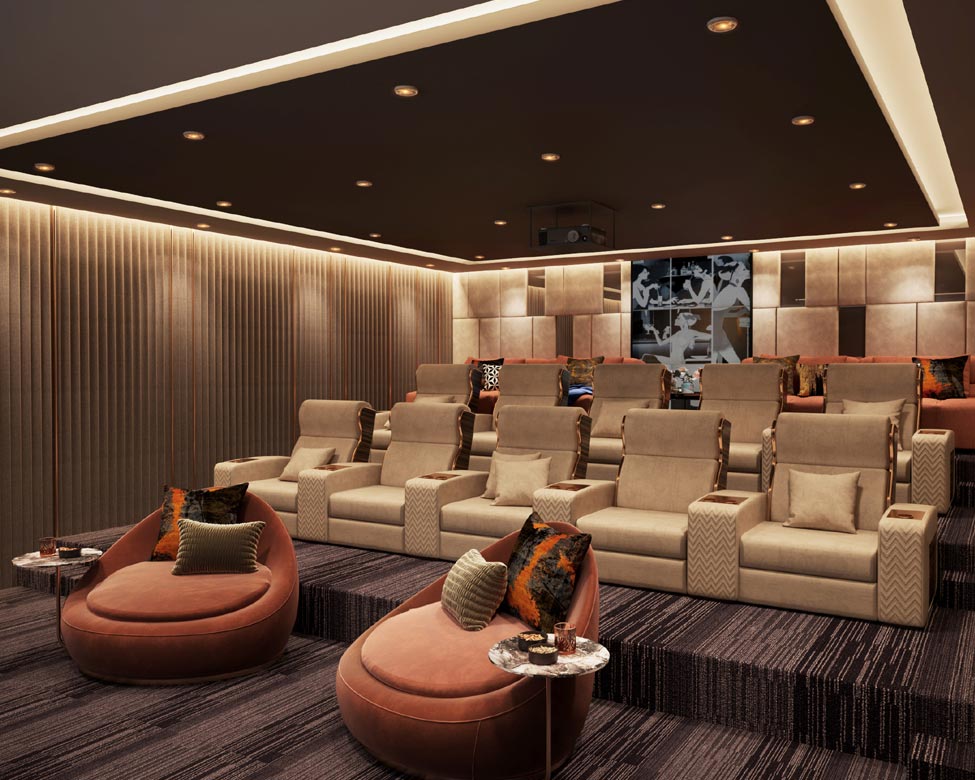
- Front Speakers: These speakers are responsible for the main dialogue and sound effects. Choose high-quality speakers with clear and accurate sound reproduction.
- Center Speaker: The center speaker is responsible for the majority of the dialogue. Choose a speaker that is clear and intelligible.
- Surround Speakers: These speakers create the immersive surround sound effect. Choose speakers that are balanced and complement the front speakers.
- Subwoofer: The subwoofer is responsible for the low-frequency sounds, such as explosions and rumbling. Choose a subwoofer that is powerful and accurate.
3. Source Devices: Feeding Your Entertainment
Source devices provide the content for your home theater. Choose devices that support the latest audio and video formats.
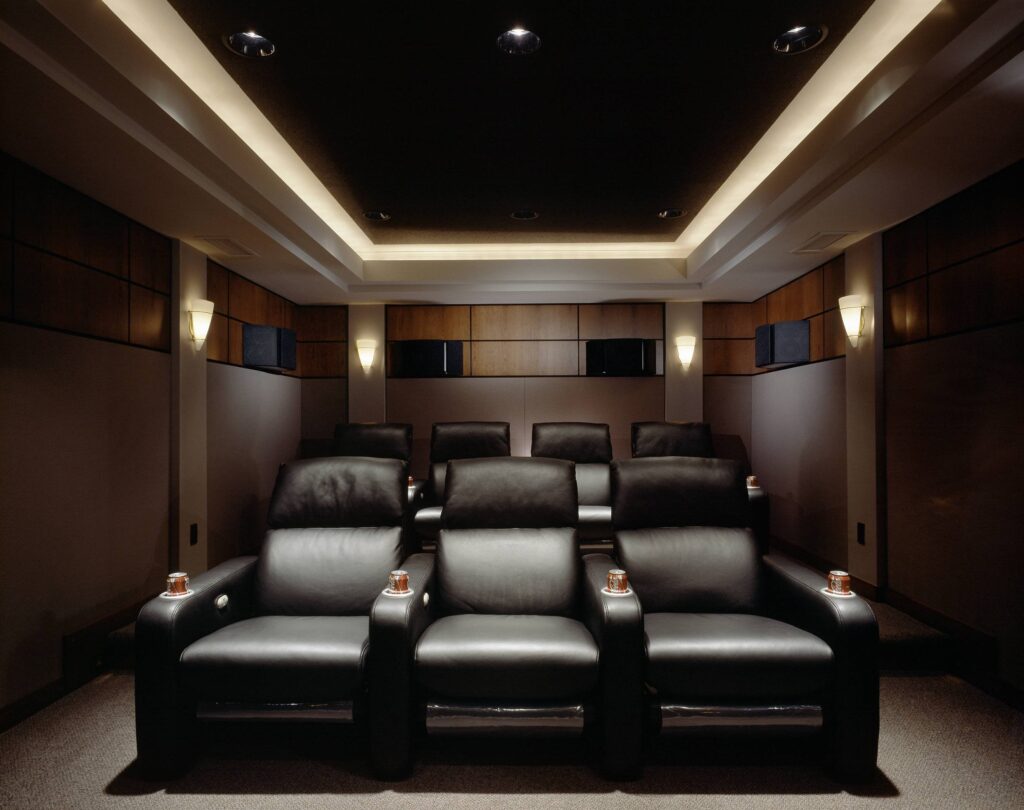
- Blu-ray Player: Plays Blu-ray discs and DVDs.
- Streaming Device: Streams content from online services like Netflix, Hulu, and Amazon Prime Video.
- Gaming Console: Plays video games.
- Cable Box: Provides access to cable television channels.
- Media Server: Stores and streams your own digital media library.
Acoustic Treatments: Optimizing Sound Quality
Acoustic treatments are essential for improving the sound quality in your home theater. They help to reduce reflections, echoes, and standing waves, creating a more balanced and immersive listening experience.
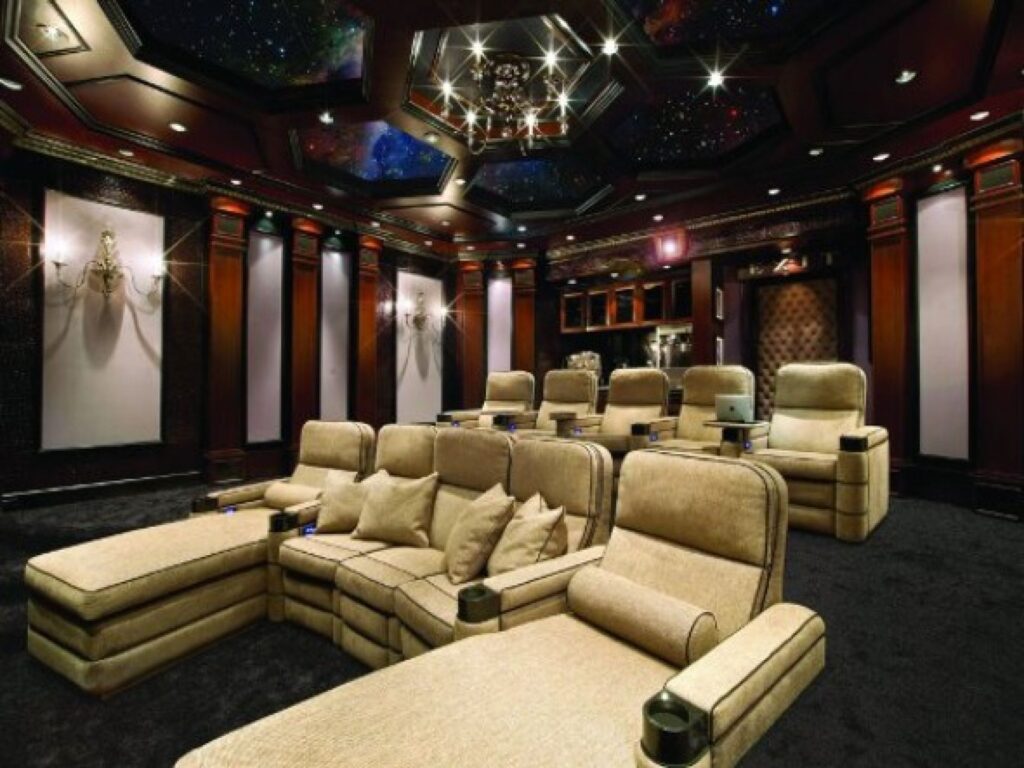
1. Acoustic Panels: Absorbing Sound Reflections
Acoustic panels are designed to absorb sound reflections, reducing reverberation and improving clarity. They are typically placed on walls and ceilings to minimize reflections from hard surfaces.
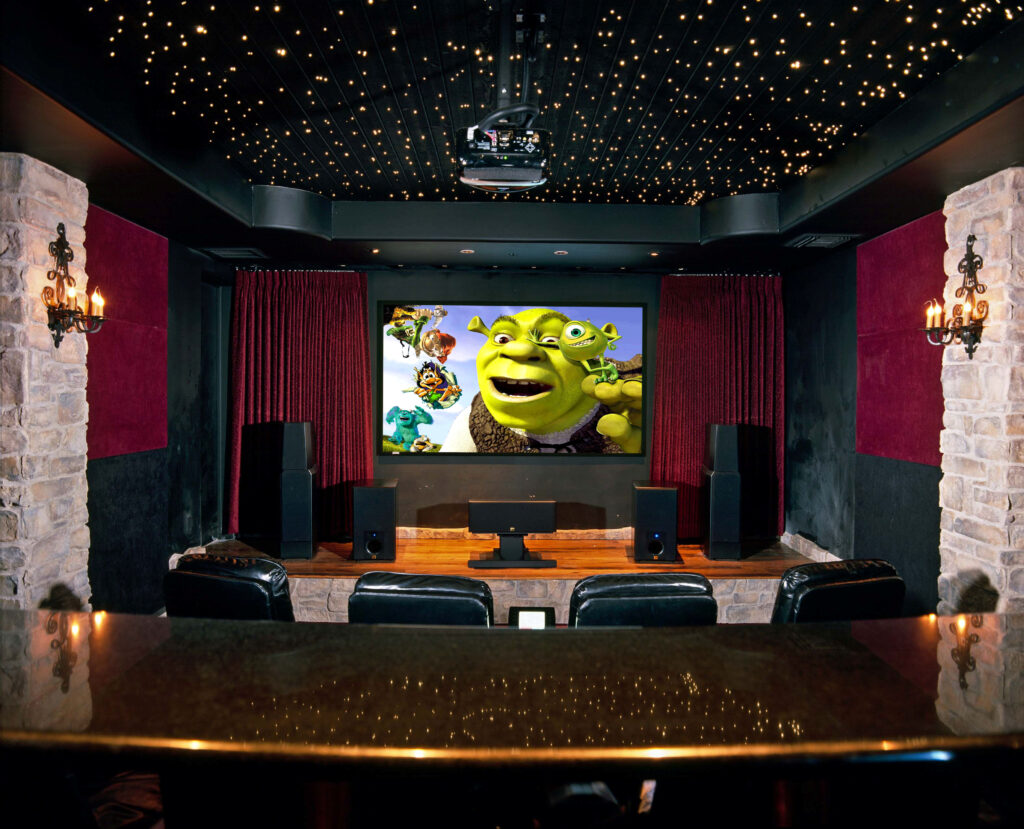
2. Bass Traps: Taming Low-Frequency Sounds
Bass traps are designed to absorb low-frequency sounds, such as bass frequencies, which can cause standing waves and muddy the sound. They are typically placed in corners of the room where bass frequencies tend to accumulate.
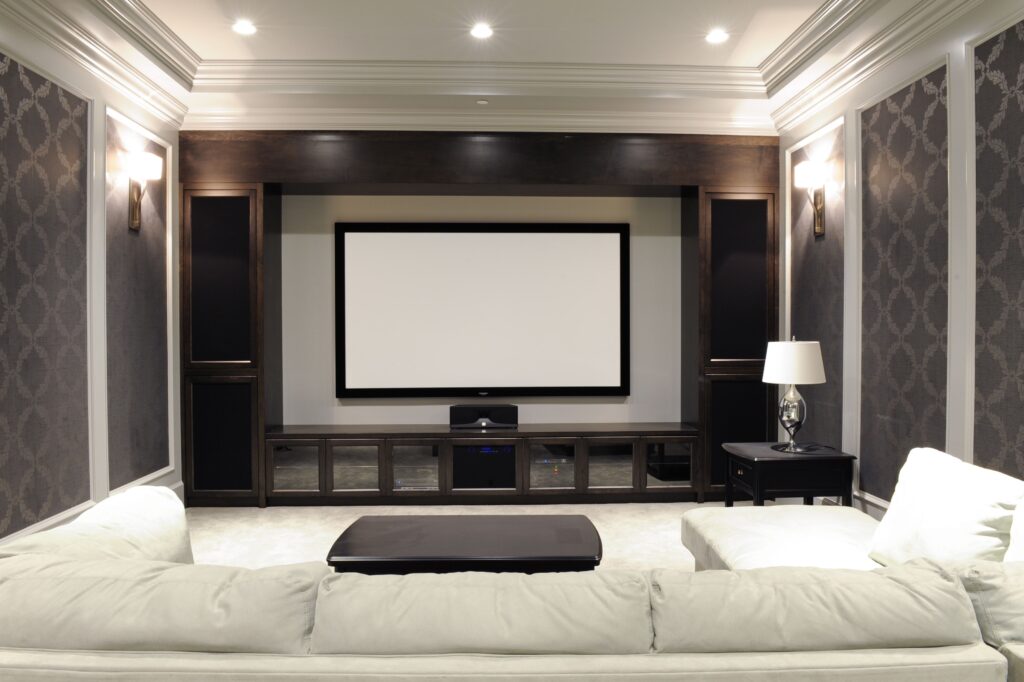
3. Diffusers: Scattering Sound Waves
Diffusers are designed to scatter sound waves, creating a more natural and spacious sound field. They are typically placed on walls and ceilings to diffuse reflections and prevent echoes.
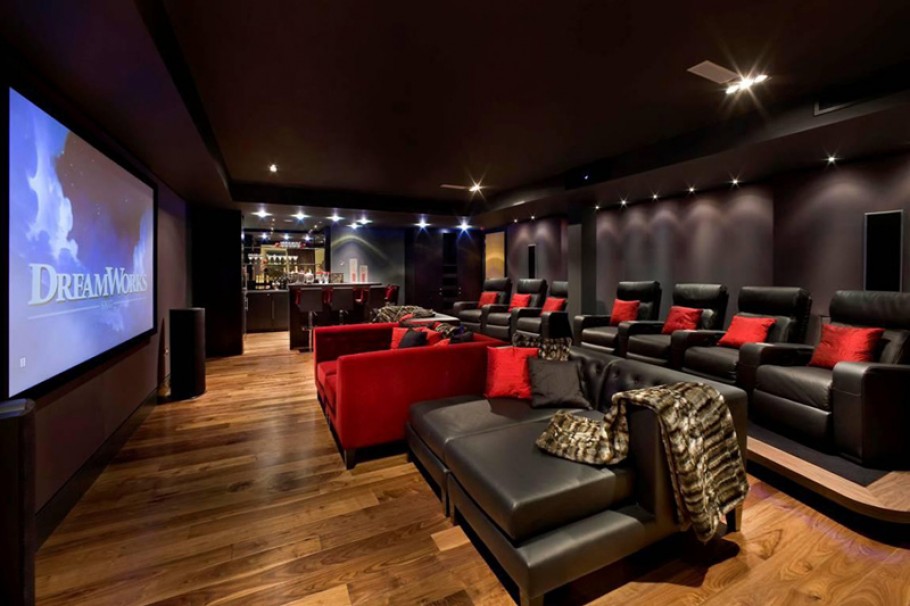
Lighting: Setting the Mood and Minimizing Glare
Lighting plays a crucial role in creating the ambiance of your home theater and minimizing glare on the screen. Consider these lighting options:
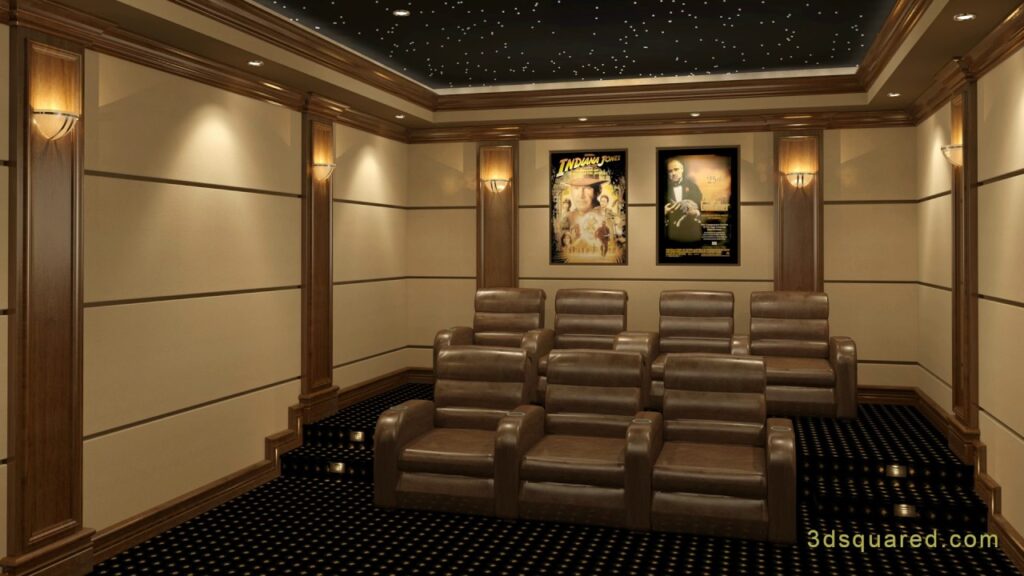
1. Dimmer Switches: Controlling Brightness Levels
Dimmer switches allow you to adjust the brightness of your lights, creating the perfect mood for movie nights. Choose dimmers that are compatible with your light bulbs.
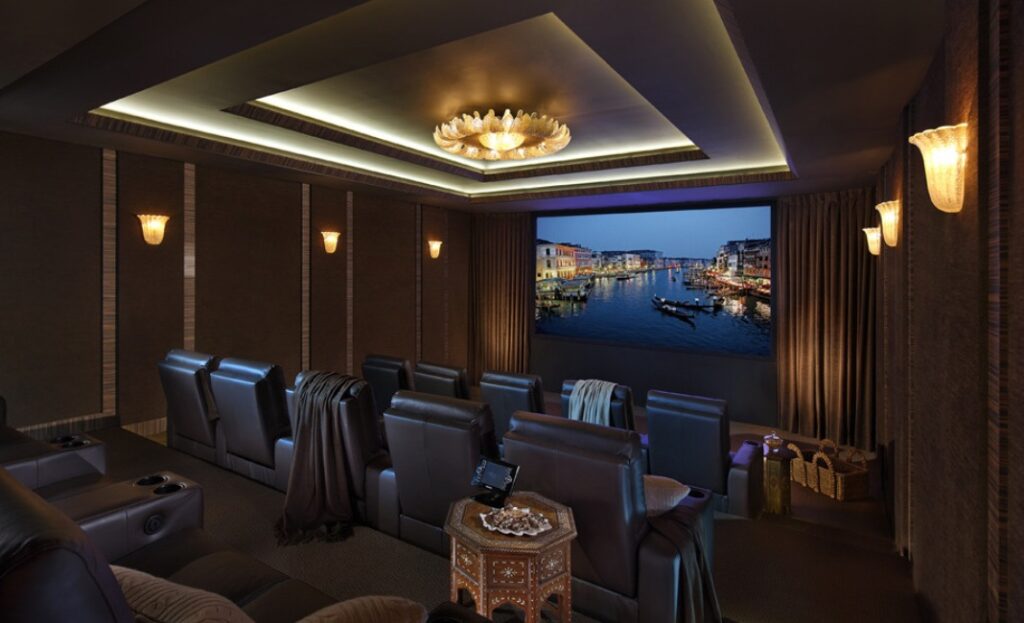
2. Recessed Lighting: Creating a Clean and Modern Look
Recessed lighting provides a clean and modern look, while also providing ample illumination. Install recessed lights along the perimeter of the room to minimize glare on the screen.
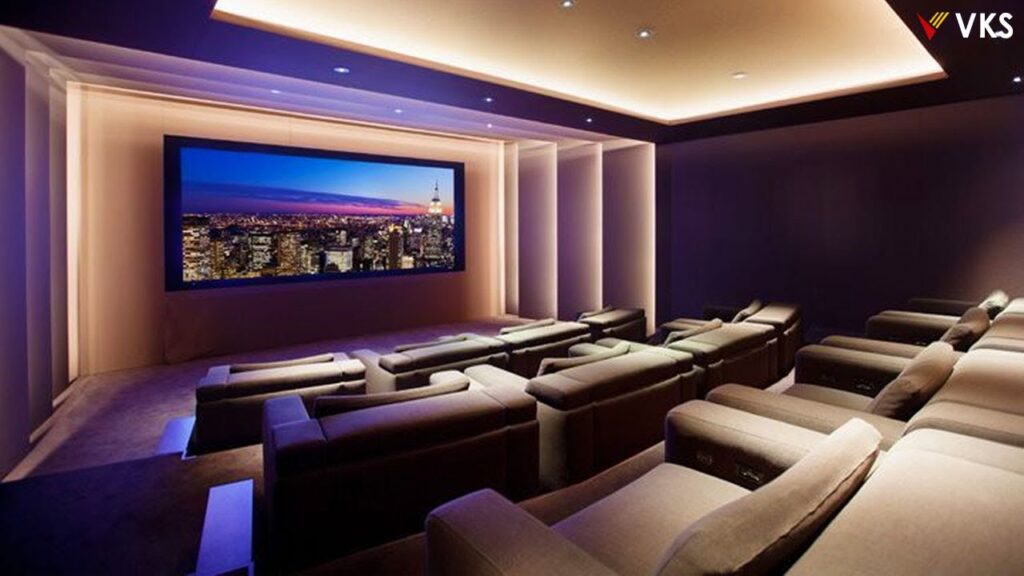
3. Sconces: Adding Ambiance and Style
Sconces add ambiance and style to your home theater. Choose sconces with adjustable shades to control the direction of the light.
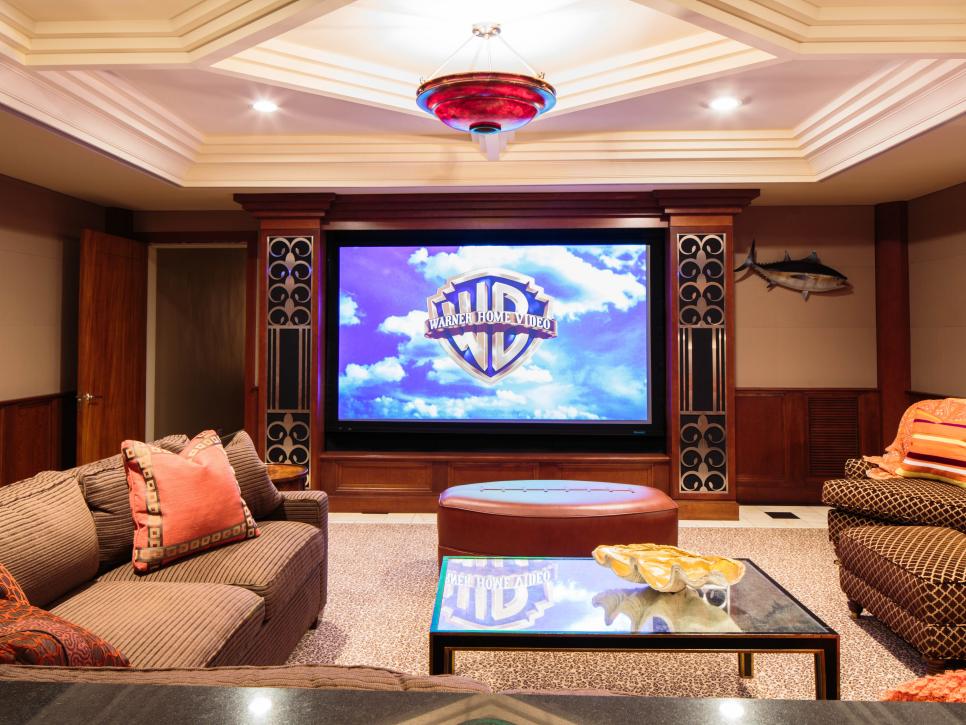
4. LED Strip Lighting: Adding a Touch of Modern Flair
LED strip lighting can be used to add a touch of modern flair to your home theater. Install LED strips behind the screen or along the baseboards to create a subtle and inviting glow.
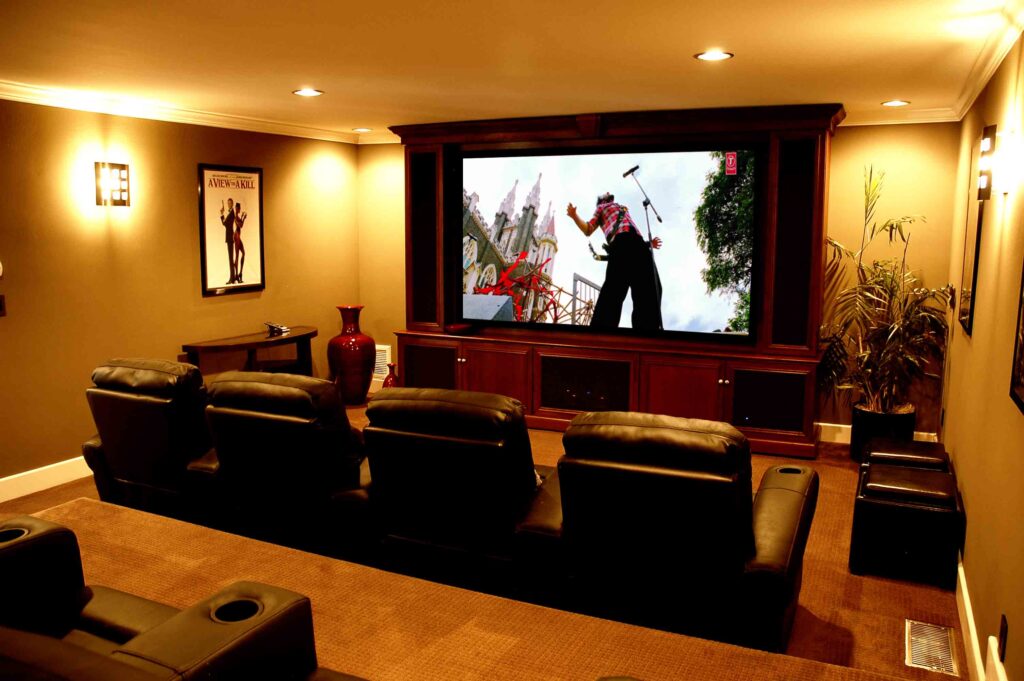
Home Theater Seating: Comfort and Style Combined
Home theater seating is an essential element for creating a comfortable and enjoyable viewing experience. Choose seating that is supportive, stylish, and complements your room’s aesthetics.
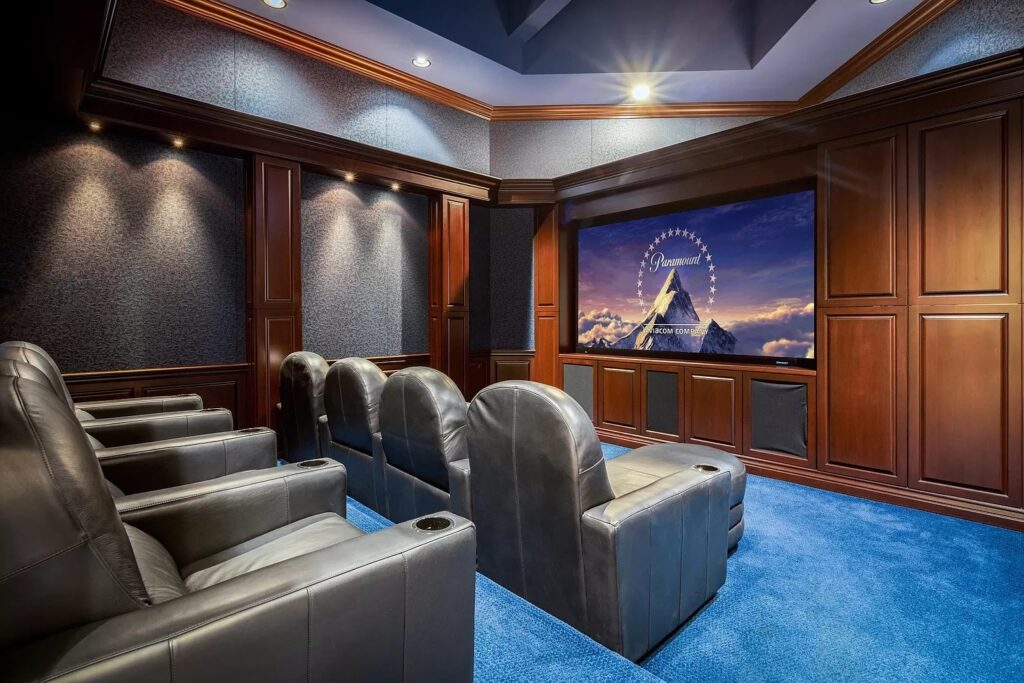
1. Reclining Chairs: The Ultimate in Comfort
Reclining chairs offer the ultimate in comfort, allowing you to relax and recline while watching your favorite movies. Choose reclining chairs with built-in cup holders and storage compartments.
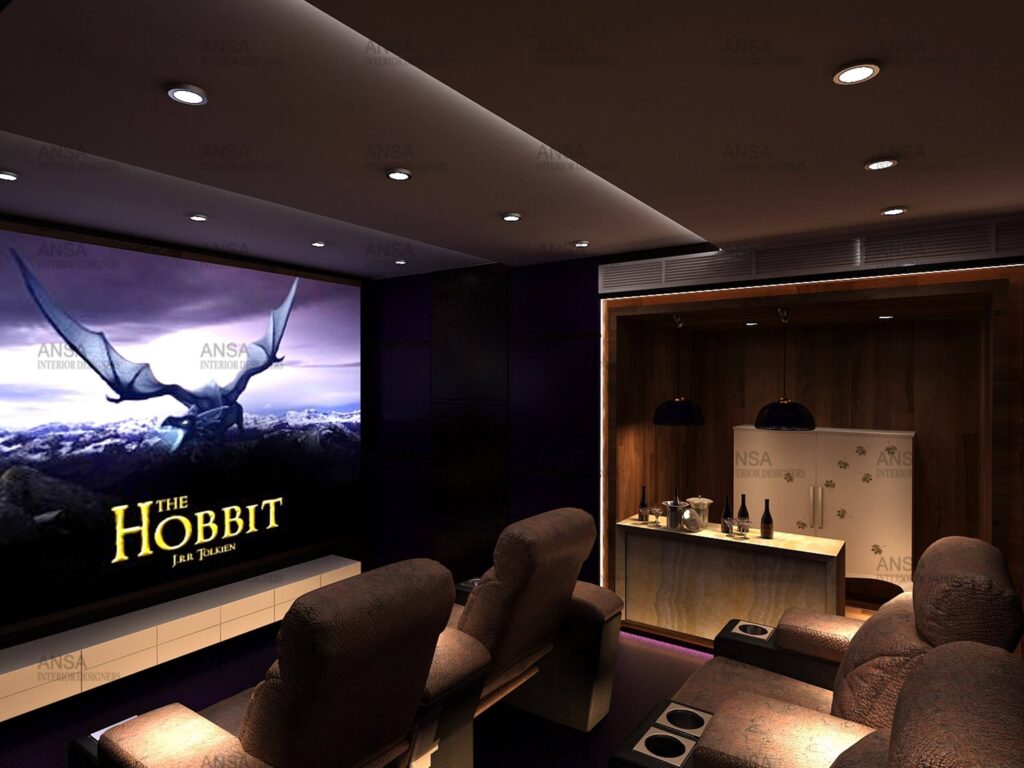
2. Sectionals: Creating a Social Gathering Space
Sectionals are a great option for creating a social gathering space in your home theater. Choose a sectional with comfortable cushions and ample seating.
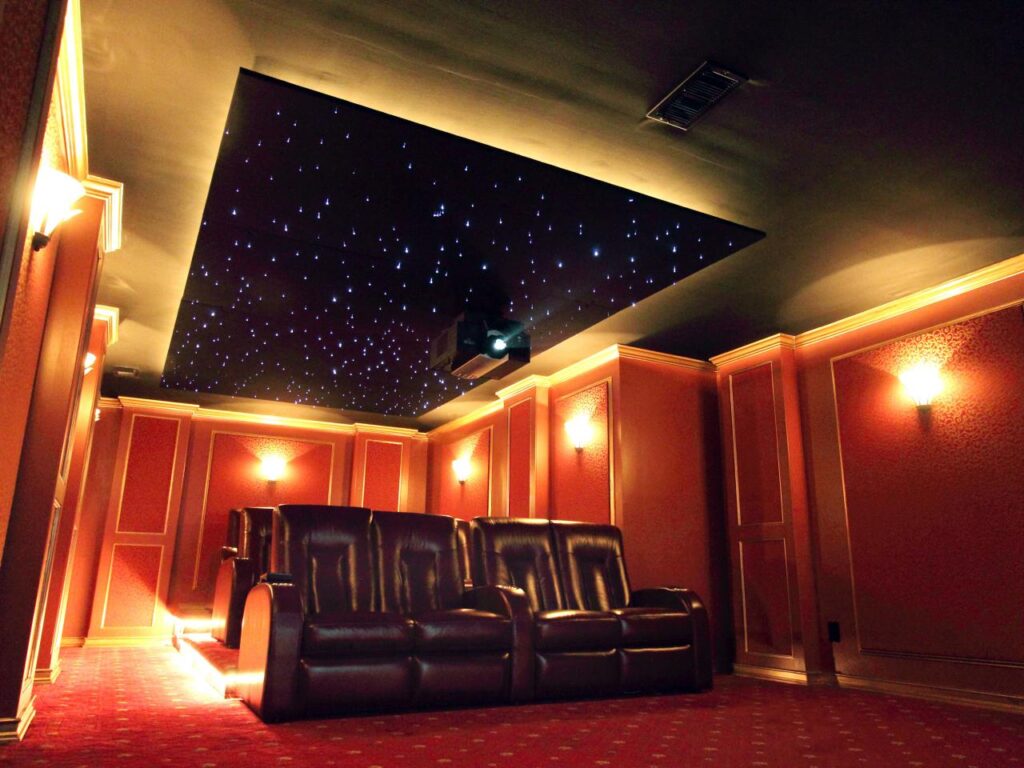
3. Dedicated Home Theater Seating: Designed for Optimal Viewing
Dedicated home theater seating is specifically designed for optimal viewing. These seats typically feature reclining capabilities, built-in cup holders, and lumbar support.
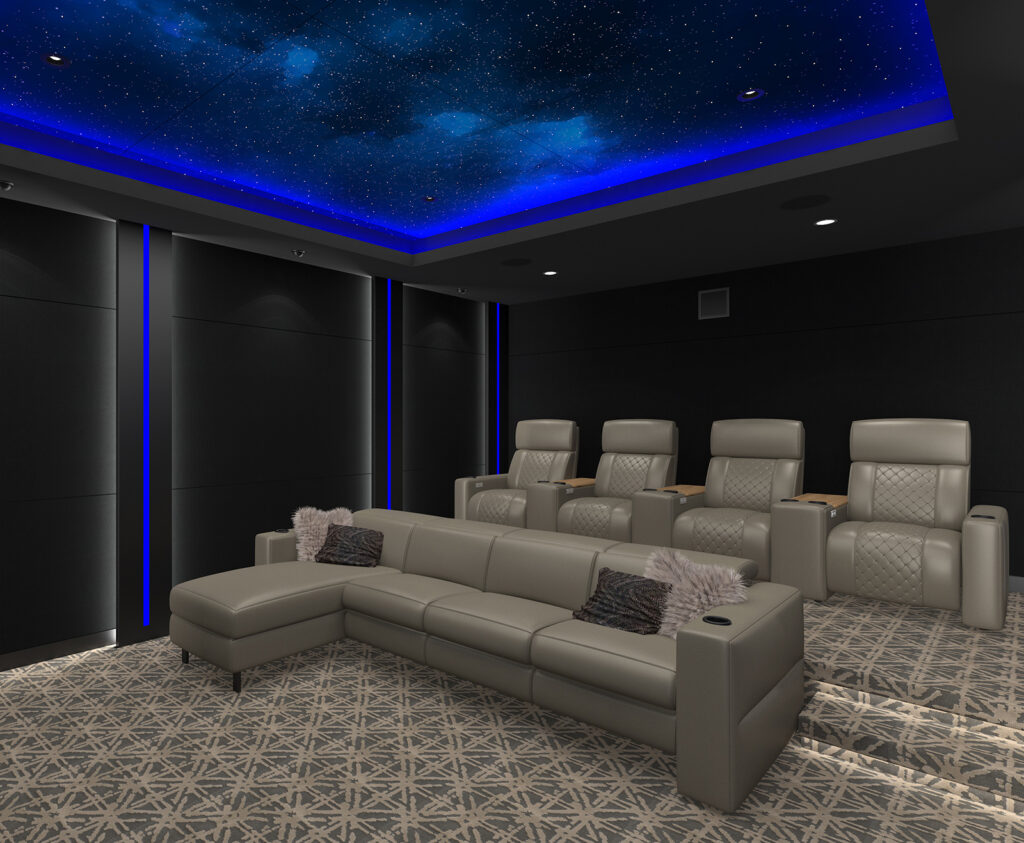
Home Theater Design Styles: Finding Your Inspiration
The design style of your home theater should reflect your personal taste and preferences. Here are a few popular home theater design styles to consider:
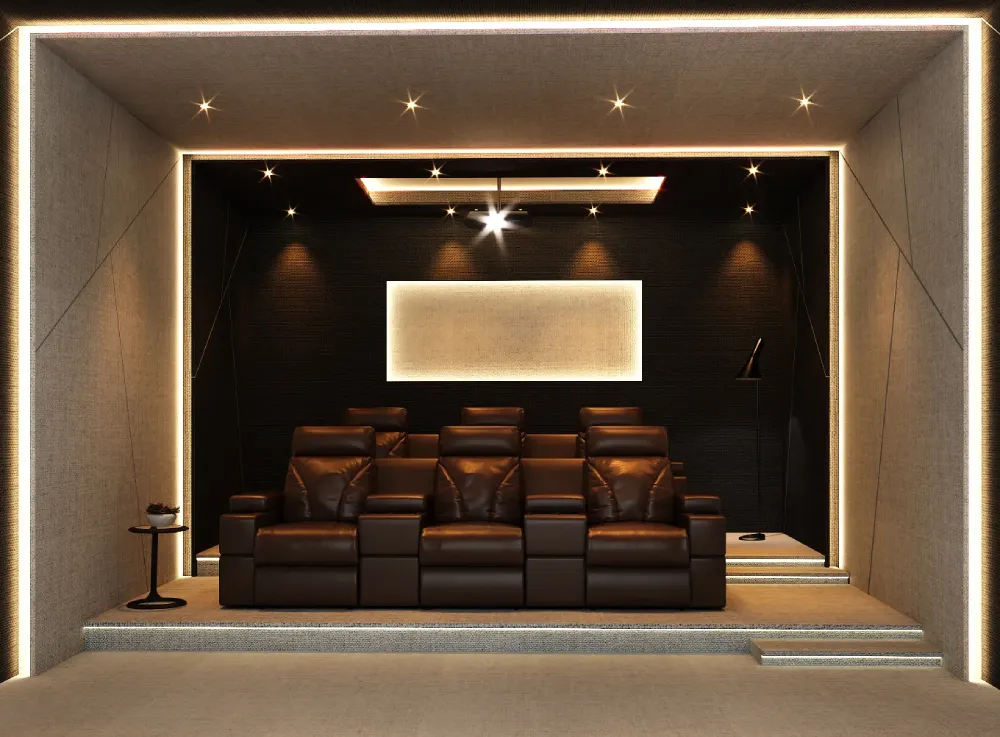
1. Modern Minimalist: Clean Lines and Sleek Aesthetics
Modern minimalist home theaters feature clean lines, sleek aesthetics, and a focus on functionality. Use neutral colors, such as gray, white, and black, to create a sophisticated and uncluttered look.
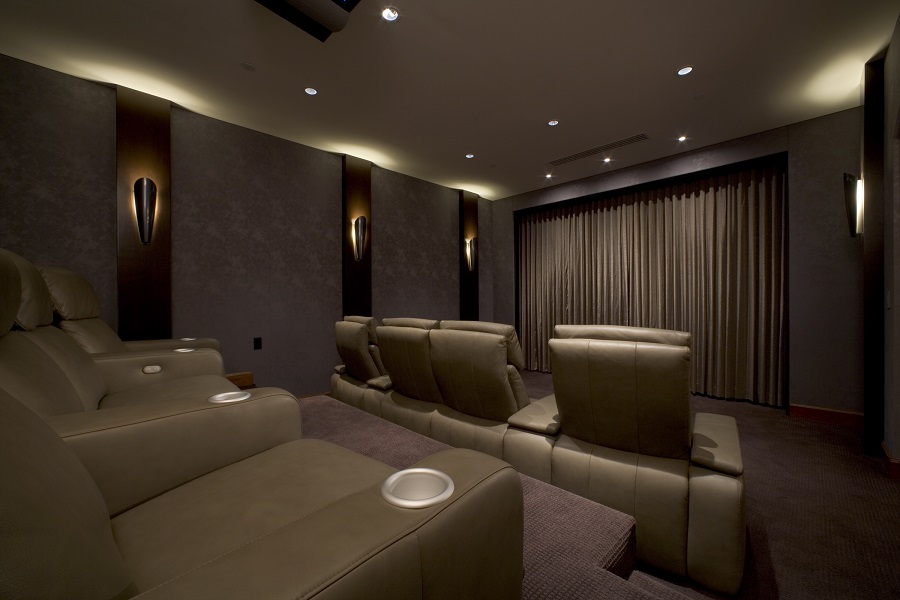
2. Classic Traditional: Warm and Inviting Ambiance
Classic traditional home theaters feature warm and inviting ambiance with rich colors, plush fabrics, and ornate details. Use dark wood furniture, velvet curtains, and antique-inspired lighting to create a timeless and elegant look.
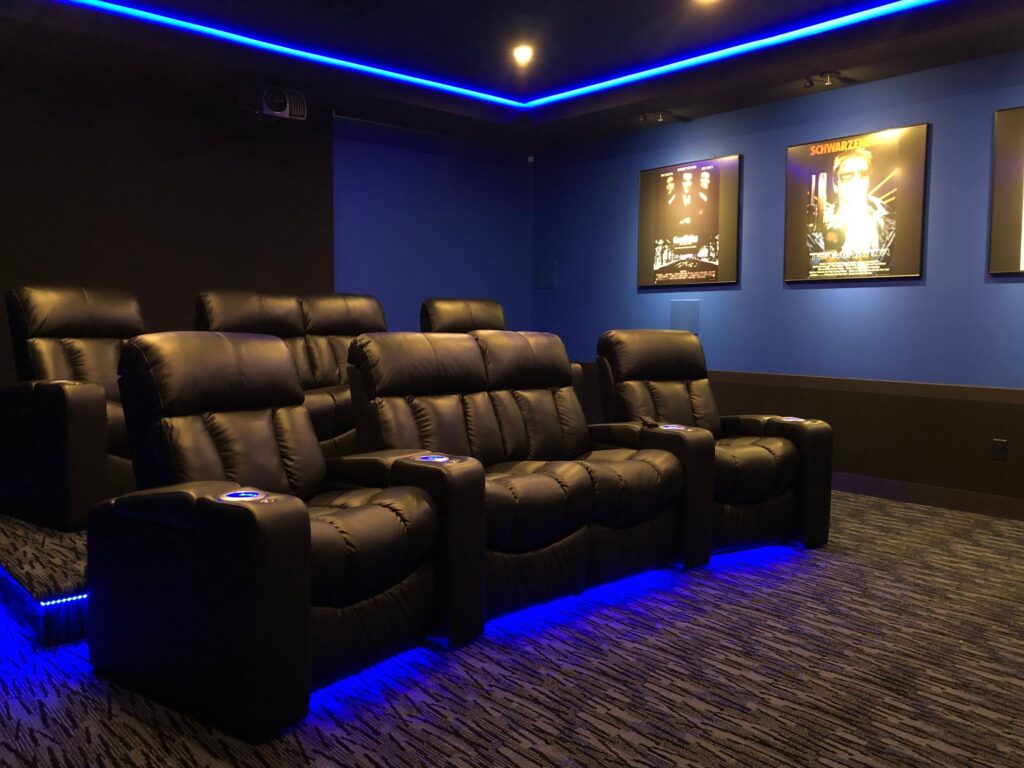
3. Art Deco: Glamorous and Luxurious
Art Deco home theaters feature glamorous and luxurious designs with geometric patterns, bold colors, and metallic accents. Use velvet upholstery, chrome fixtures, and mirrored surfaces to create a stylish and sophisticated space.
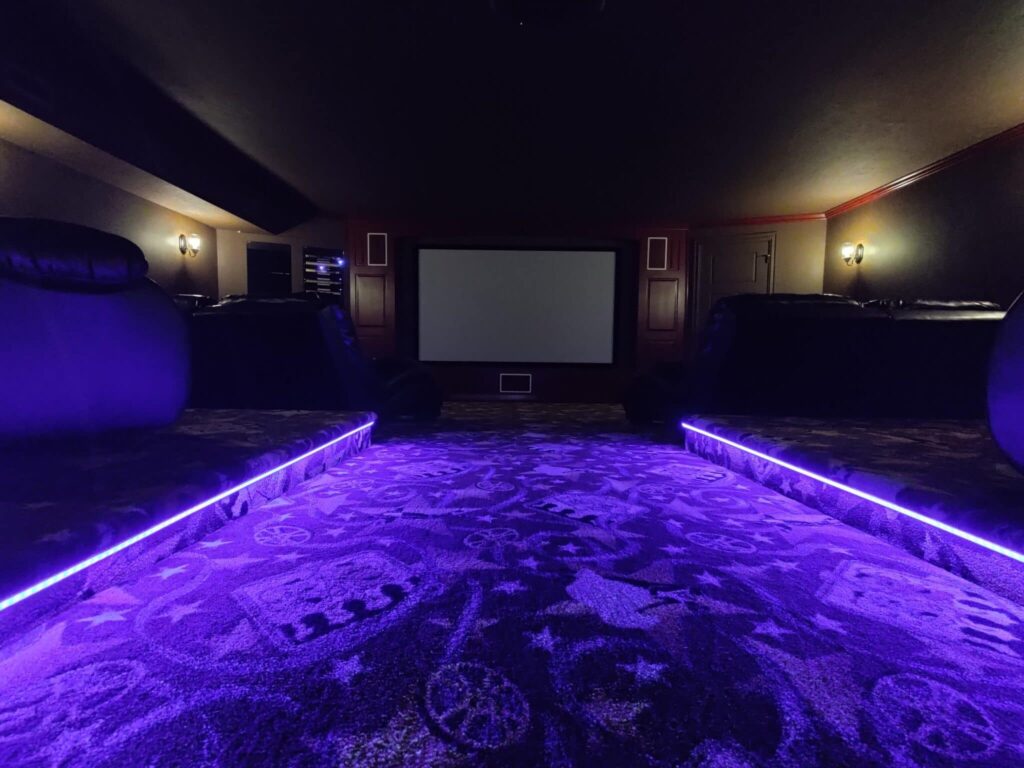
4. Rustic Chic: Cozy and Comfortable Retreat
Rustic chic home theaters feature cozy and comfortable designs with natural materials, warm colors, and vintage-inspired details. Use reclaimed wood, exposed brick, and cozy textiles to create a welcoming and relaxed atmosphere.
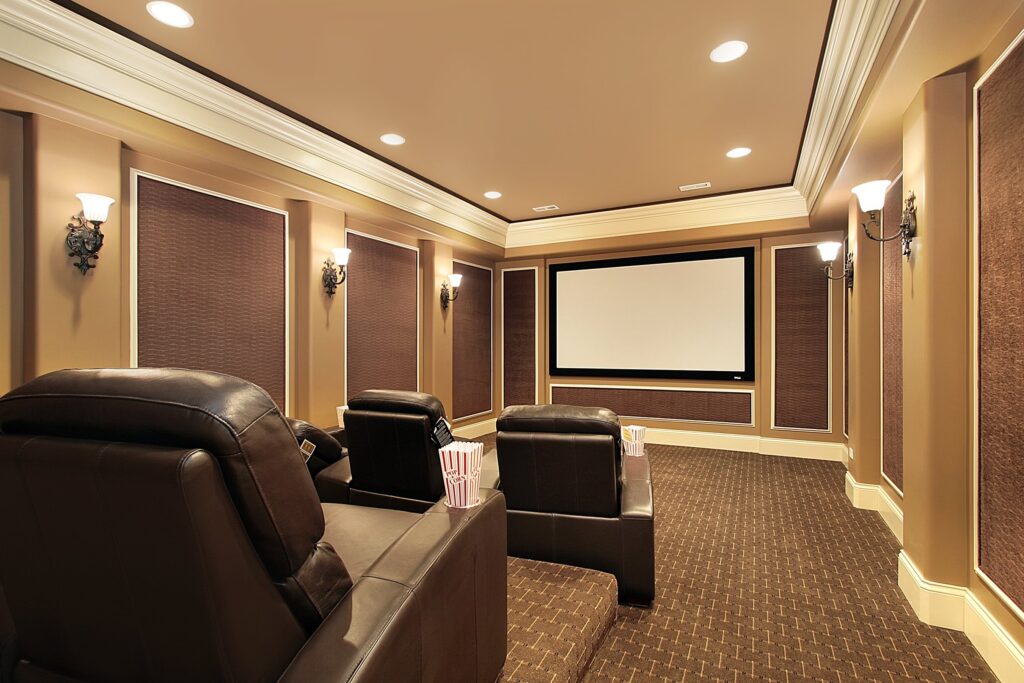
Smart Home Integration: Enhancing Your Home Theater Experience
Integrating your home theater with your smart home system can enhance your viewing experience and provide seamless control over your entertainment. Consider these smart home features:
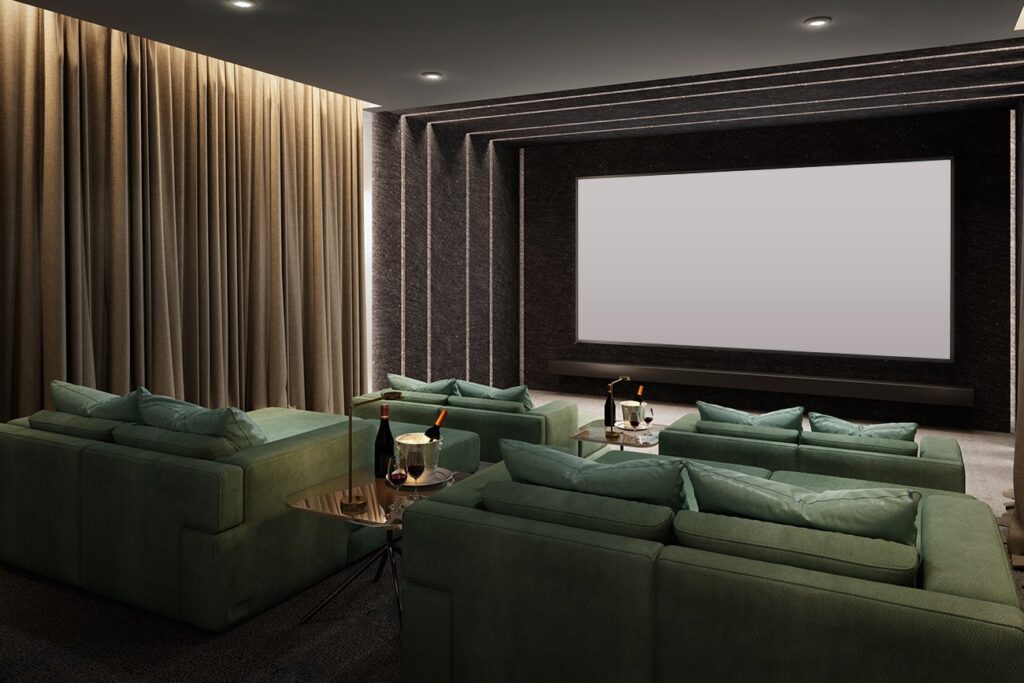
1. Smart Lighting: Automated Lighting Control
Smart lighting allows you to automate the lighting in your home theater. You can create custom lighting scenes for different activities, such as movie nights, gaming sessions, and parties. Control your lights with your voice, smartphone, or a smart home hub.
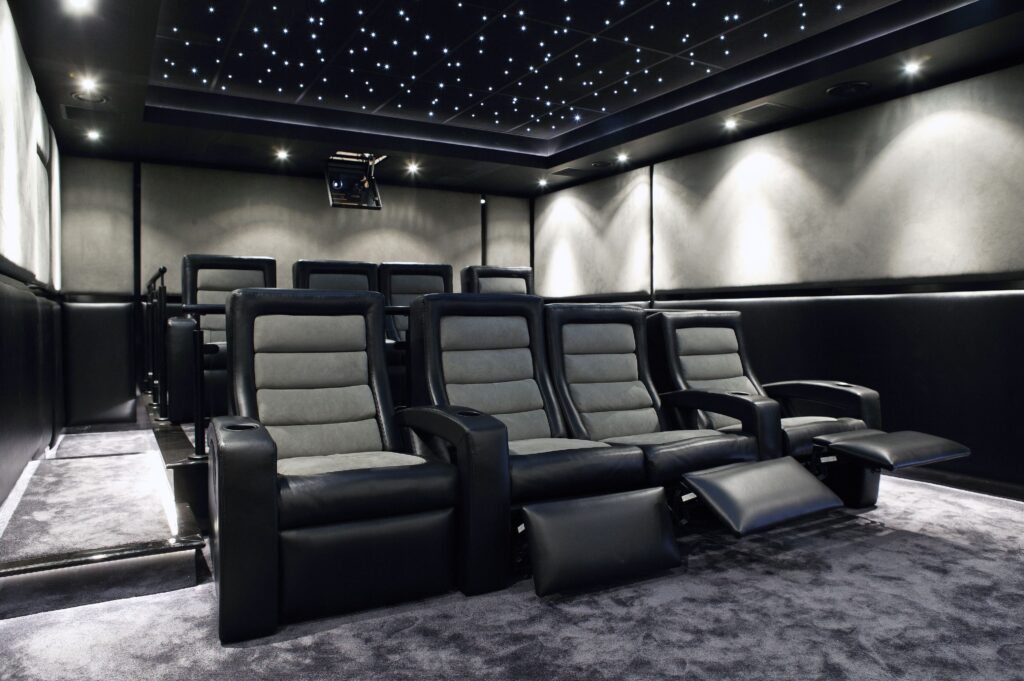
2. Smart Shades: Automated Window Coverings
Smart shades allow you to automate your window coverings. You can schedule your shades to open and close at specific times of day or control them with your voice or smartphone. Smart shades help to minimize glare on the screen and create a more immersive viewing experience.
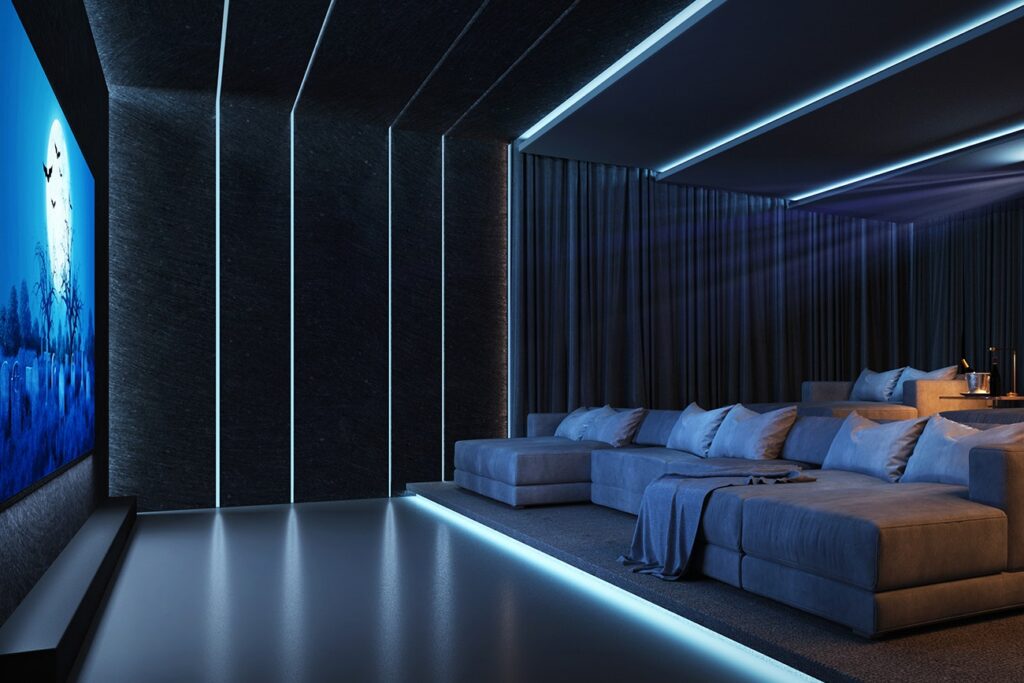
3. Universal Remote: Centralized Control
A universal remote allows you to control all of your home theater equipment with a single device. Program your remote to control your TV, projector, audio system, streaming device, and other devices. Simplify your home theater setup and eliminate the need for multiple remotes.
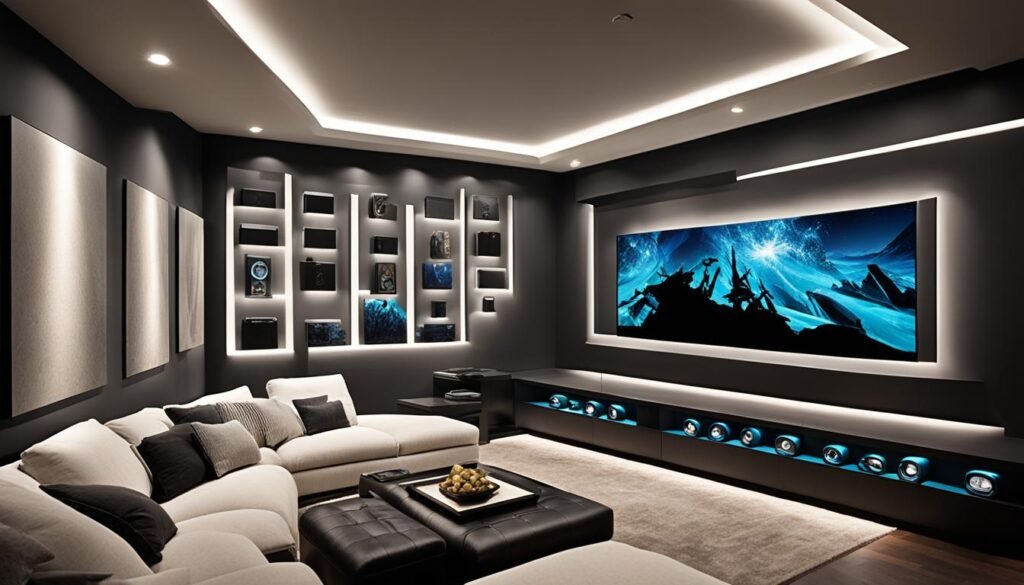
4. Voice Control: Hands-Free Operation
Voice control allows you to control your home theater with your voice. Use voice commands to turn on your TV, play a movie, adjust the volume, and more. Voice control makes it easy to operate your home theater without lifting a finger.
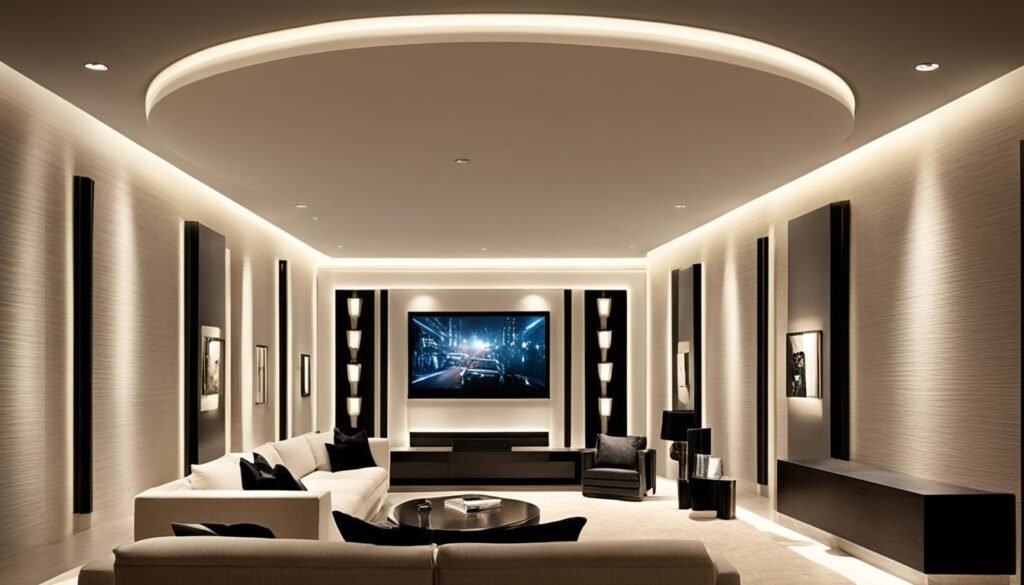
DIY Home Theater Projects: Personalizing Your Space
Adding DIY projects to your home theater is a great way to personalize your space and save money. Here are a few DIY home theater projects to consider:
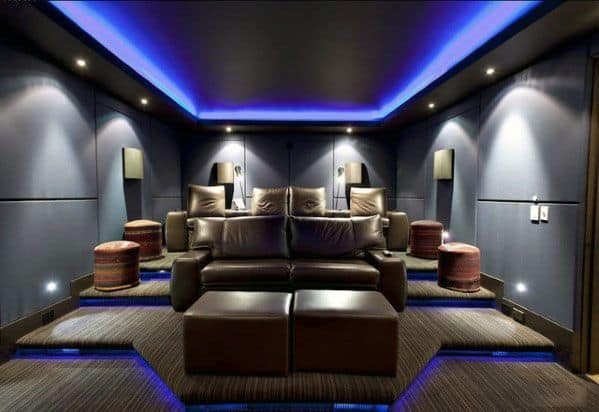
1. DIY Acoustic Panels: Reducing Sound Reflections
Build your own acoustic panels to reduce sound reflections and improve the sound quality in your home theater. Use wood frames, fabric, and acoustic insulation to create effective and affordable acoustic panels.
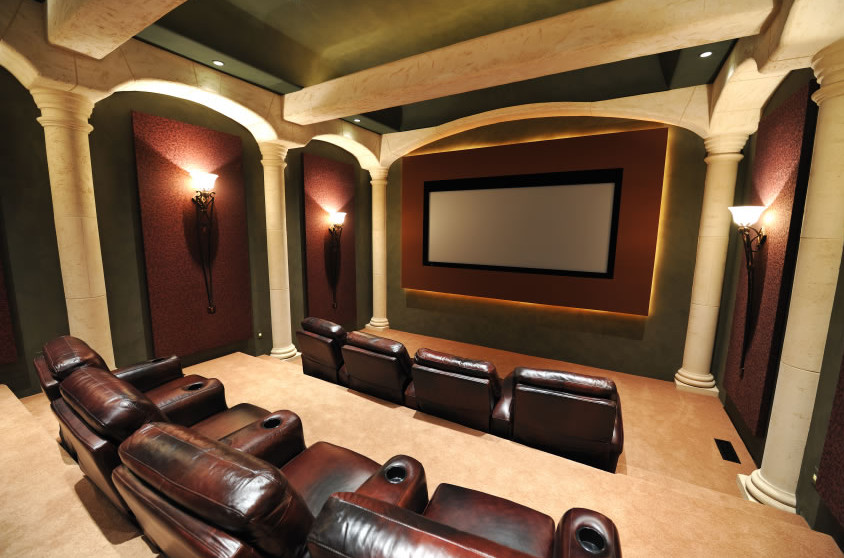
2. DIY Projector Screen: Creating a Custom Display
Build your own projector screen to create a custom display for your home theater. Use a wood frame and projector screen material to create a screen that is perfectly sized for your room.
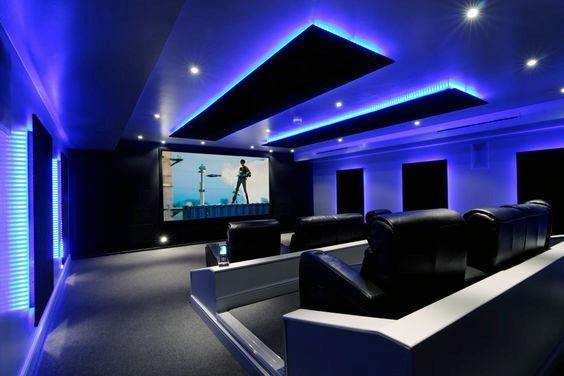
3. DIY Cable Management: Hiding Unsightly Wires
Organize and hide your cables with DIY cable management solutions. Use cable ties, cable sleeves, and cable concealers to create a clean and organized home theater setup.
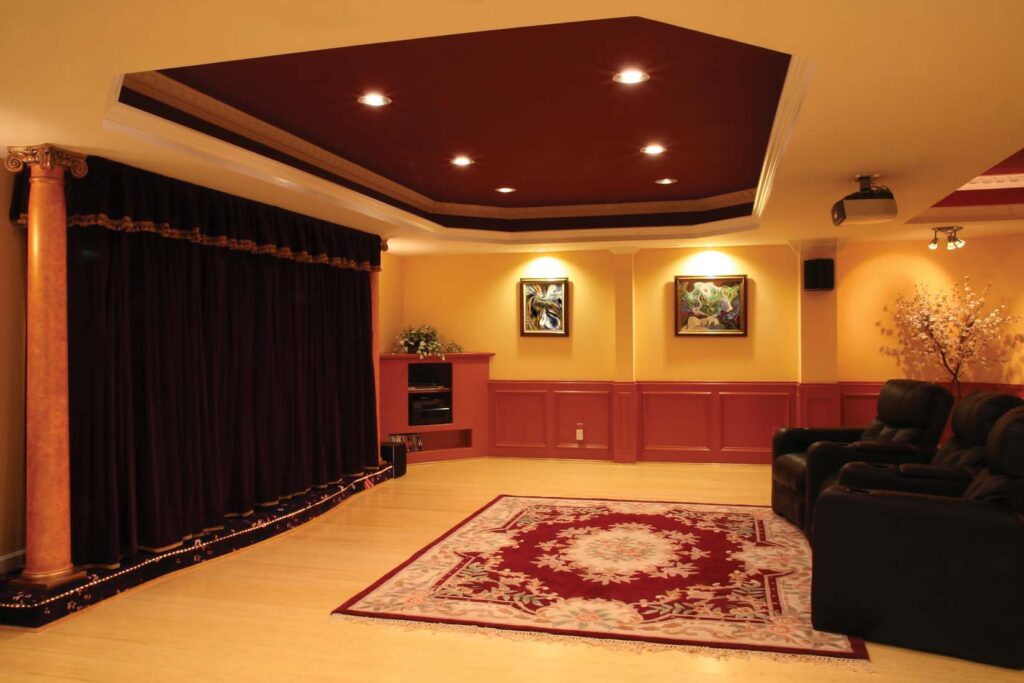
Home Theater Mistakes to Avoid: Ensuring a Successful Project
Avoid these common home theater mistakes to ensure a successful and enjoyable project:

1. Insufficient Planning: Rushing the Process
Don’t rush the planning process. Take the time to carefully assess your room, establish a budget, and choose the right equipment. Insufficient planning can lead to costly mistakes and a less-than-ideal home theater experience.
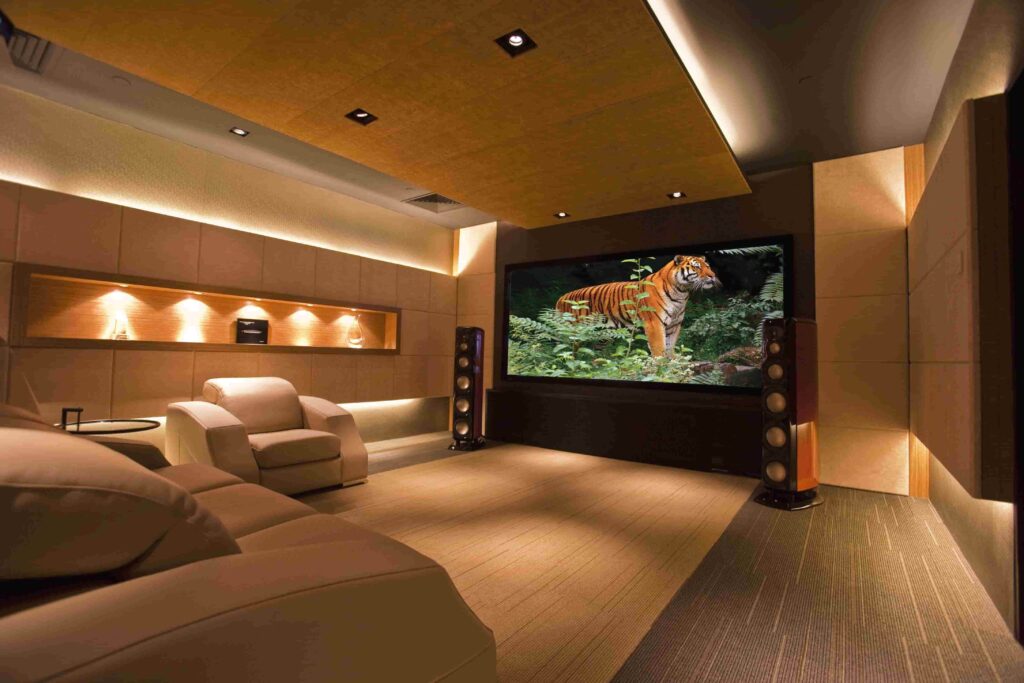
2. Neglecting Acoustics: Ignoring Sound Quality
Don’t neglect acoustics. Investing in acoustic treatments is essential for improving the sound quality in your home theater. Ignoring acoustics can result in echoes, reverberations, and a muddy sound.
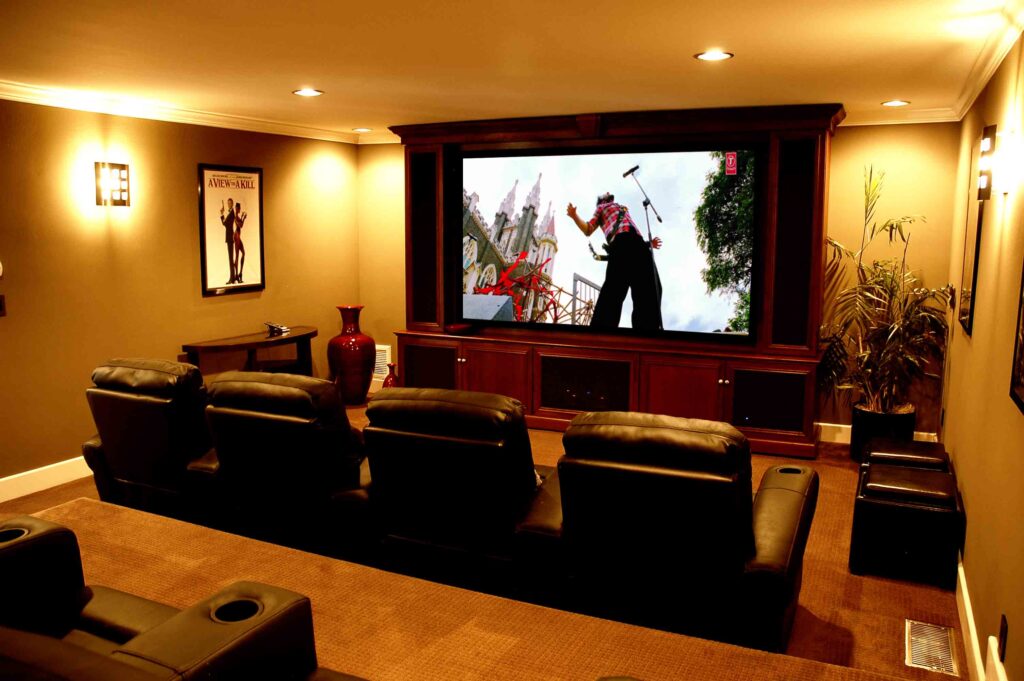
3. Poor Seating Arrangement: Blocking the View
Ensure that everyone has a clear view of the screen. Poor seating arrangements can block the view and create an uncomfortable viewing experience.
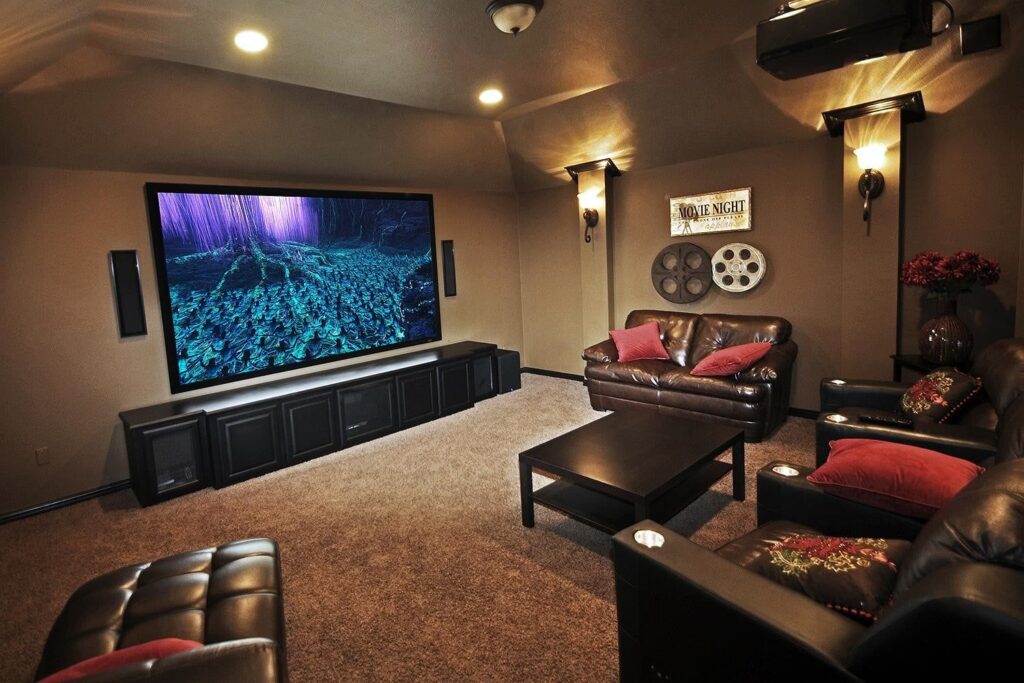
4. Inadequate Lighting Control: Glare on the Screen
Control ambient light to minimize glare on the screen. Inadequate lighting control can wash out the image and make it difficult to see the screen.
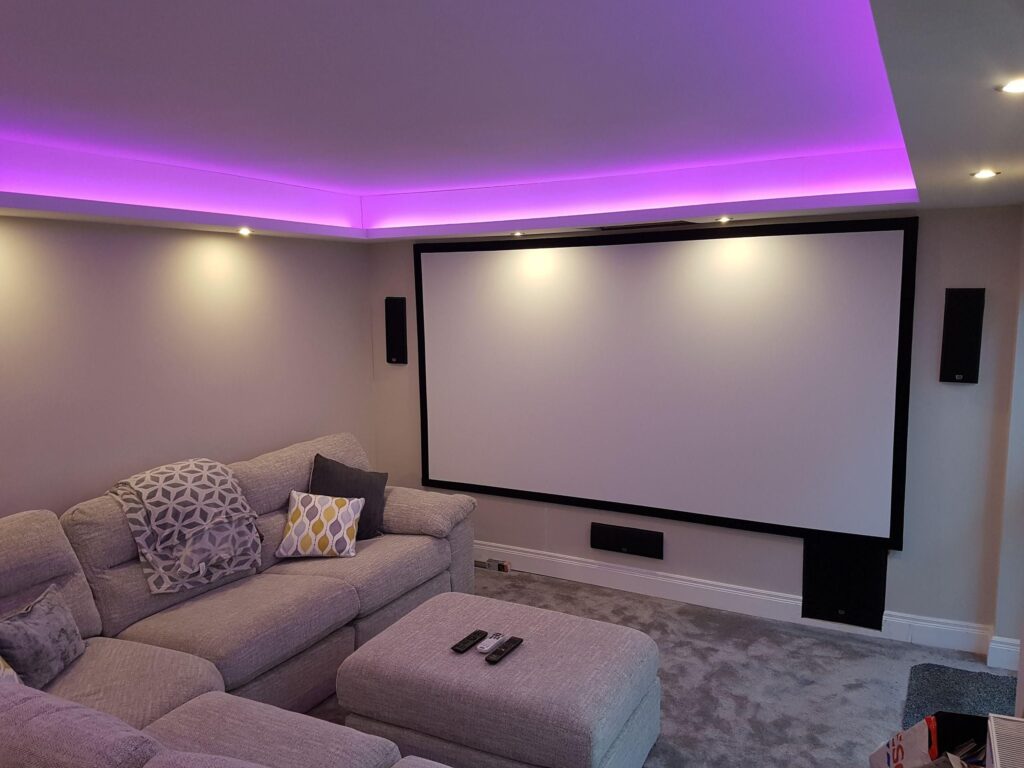
5. Overspending on Unnecessary Features: Focusing on What Matters
Focus on the essential features and don’t overspend on unnecessary extras. Allocate your budget wisely and prioritize the components that will have the biggest impact on your viewing experience.
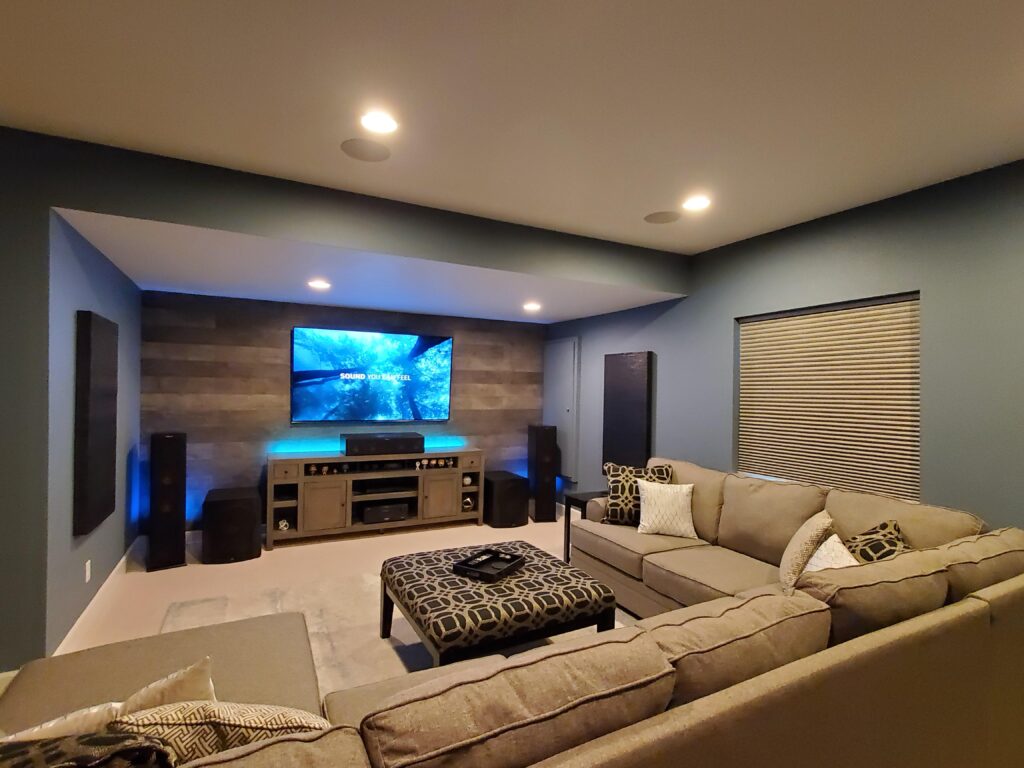
Conclusion: Creating Your Personalized Home Theater Dream
Creating a home theater is an investment in your entertainment and relaxation. By carefully planning, choosing the right equipment, and implementing thoughtful design elements, you can transform your living room into a cinematic oasis that you and your loved ones will enjoy for years to come. So, gather your inspiration, set your budget, and embark on the journey of creating your personalized home theater dream!
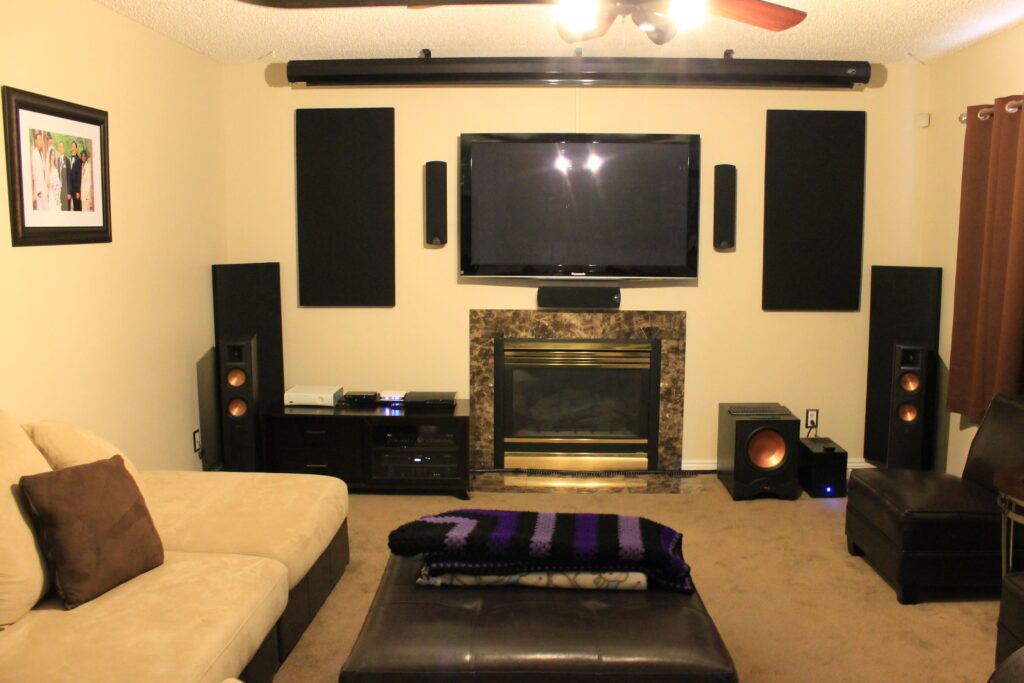
 Nimila
Nimila


